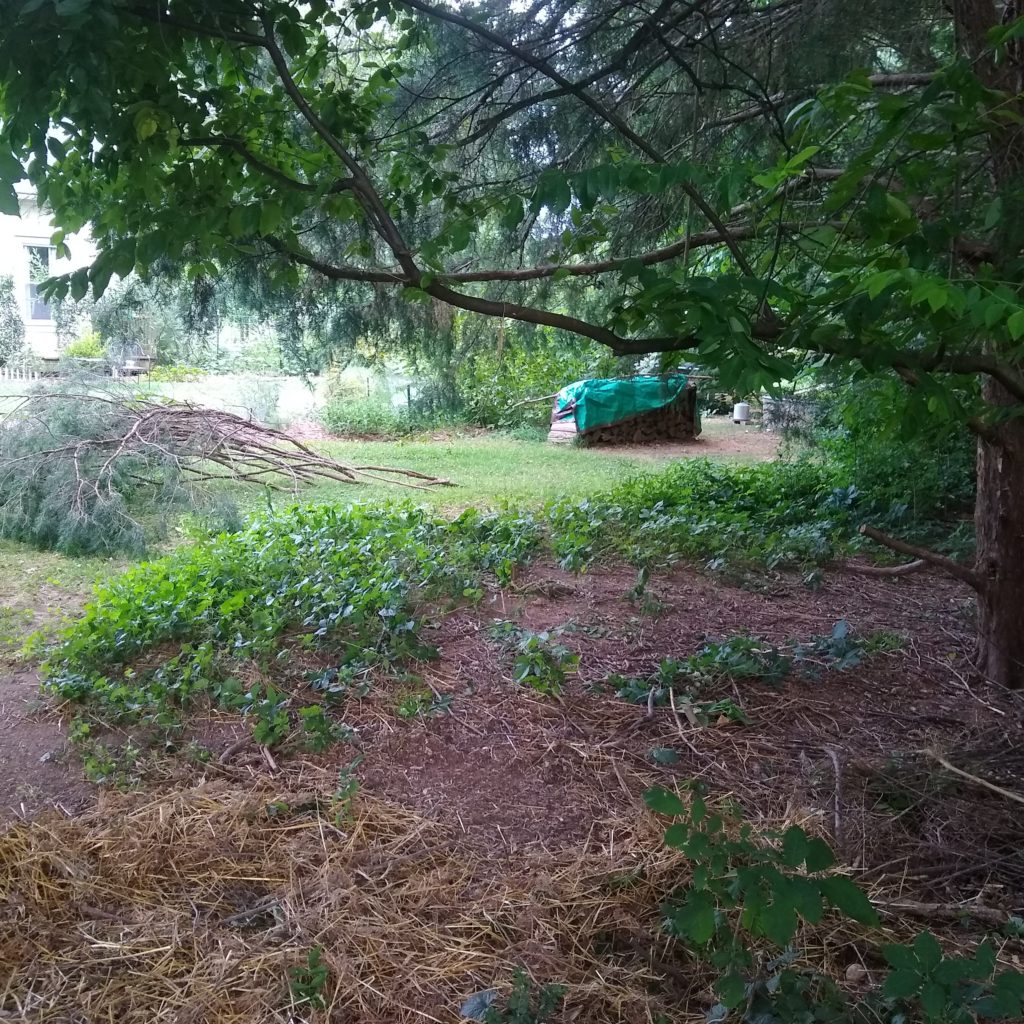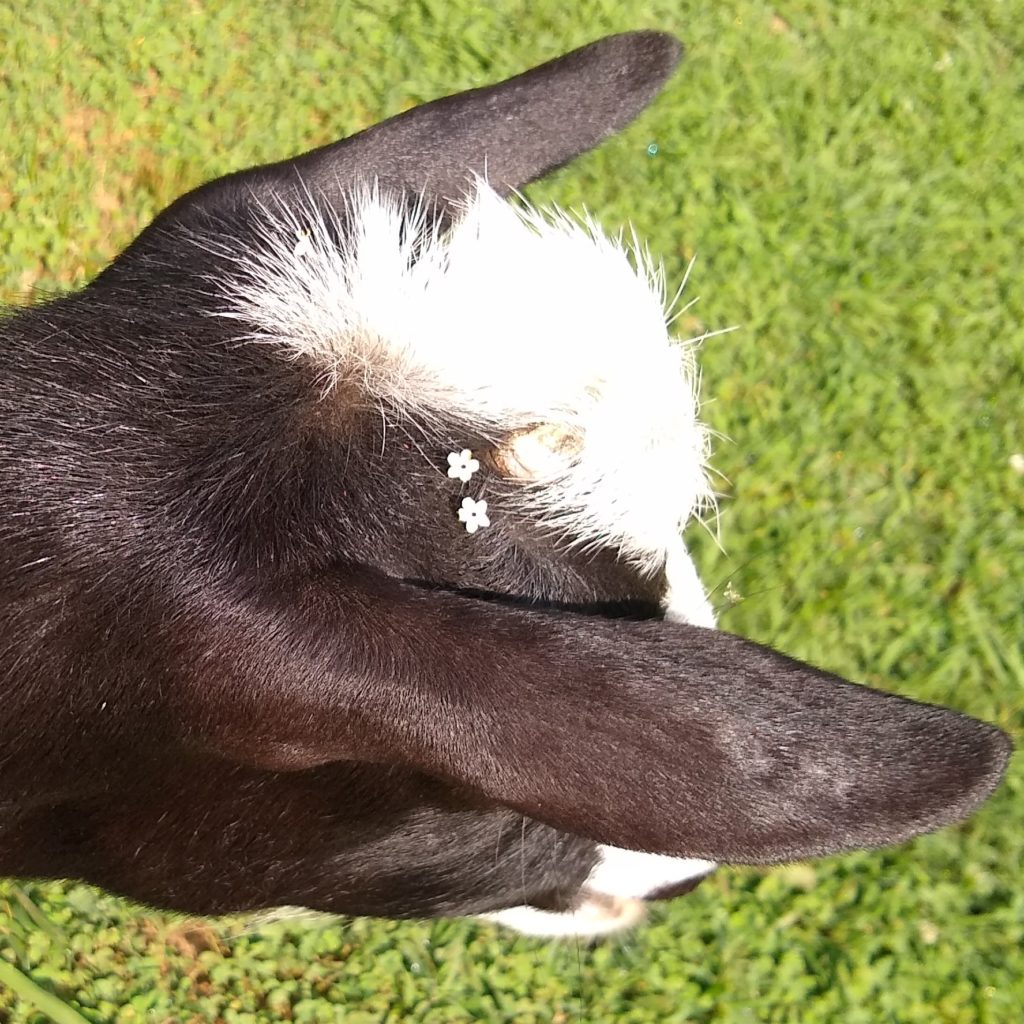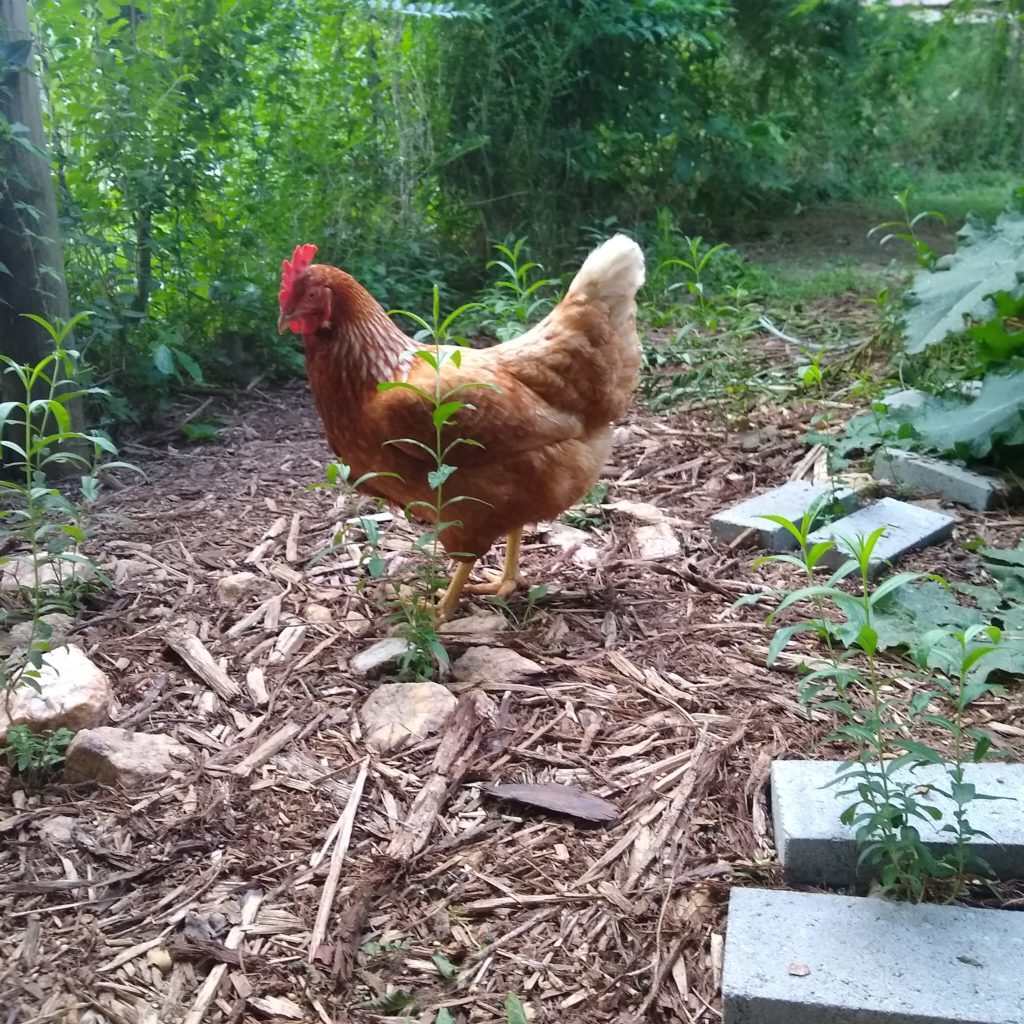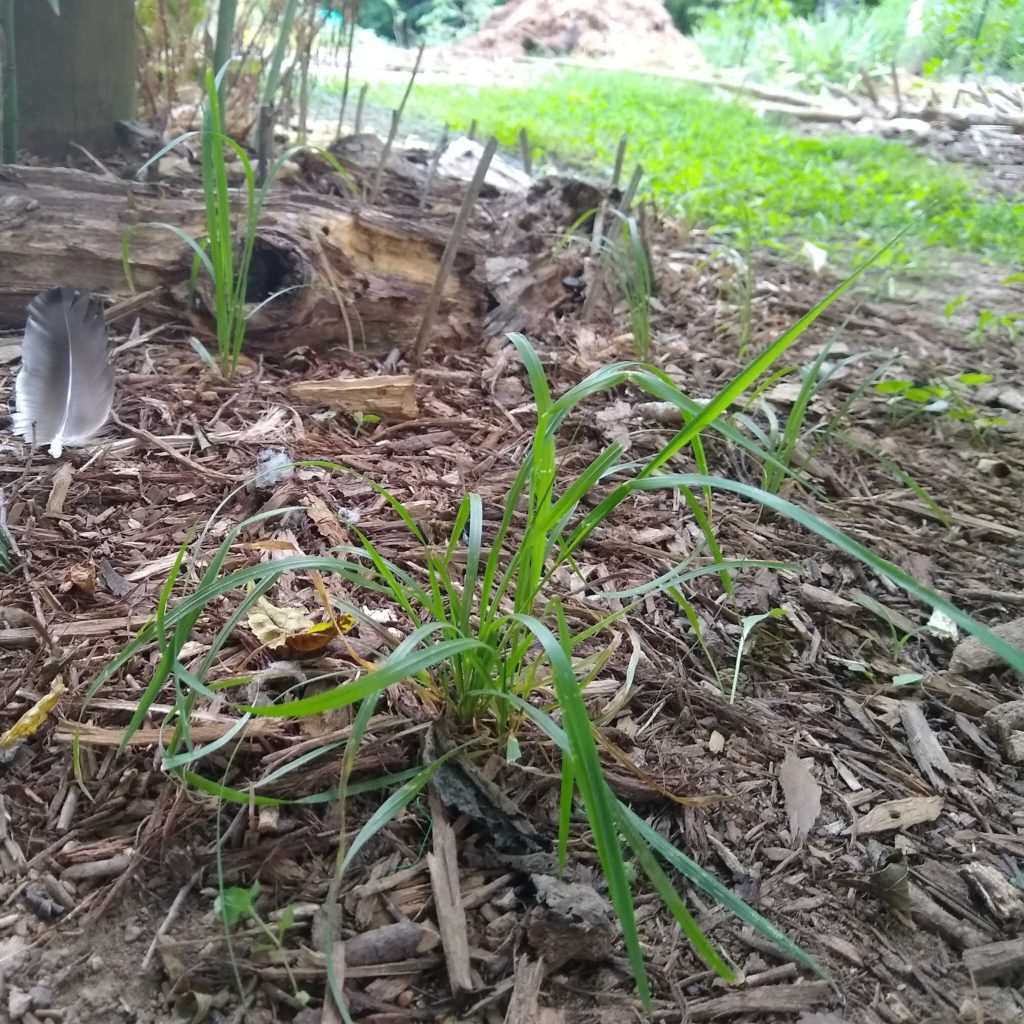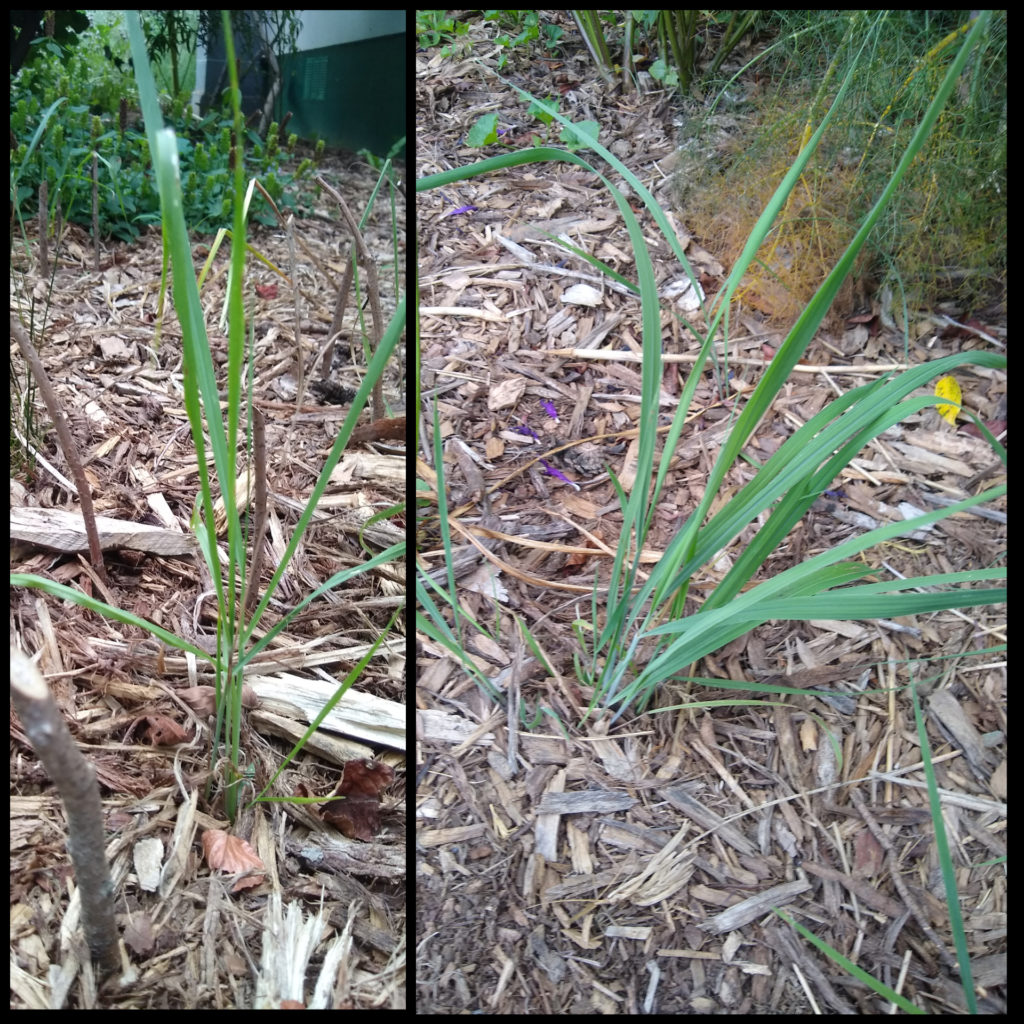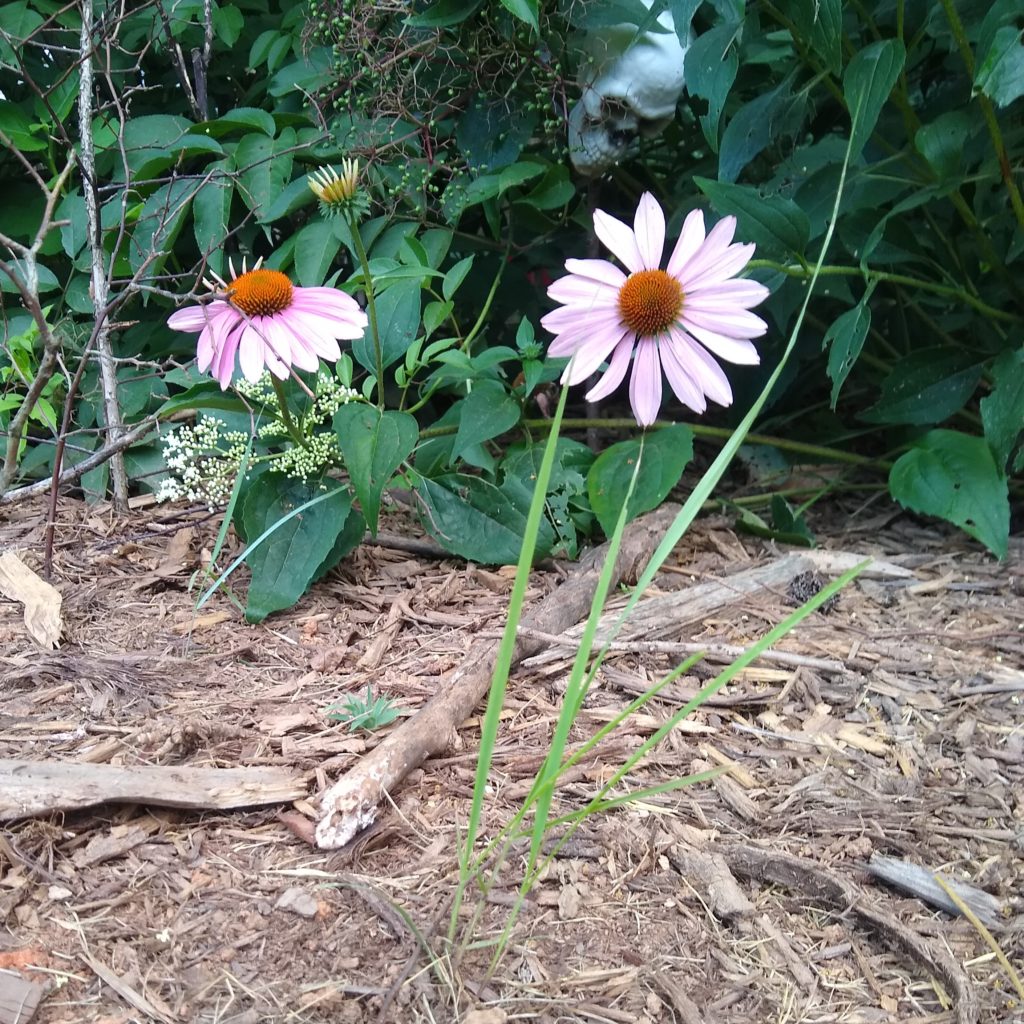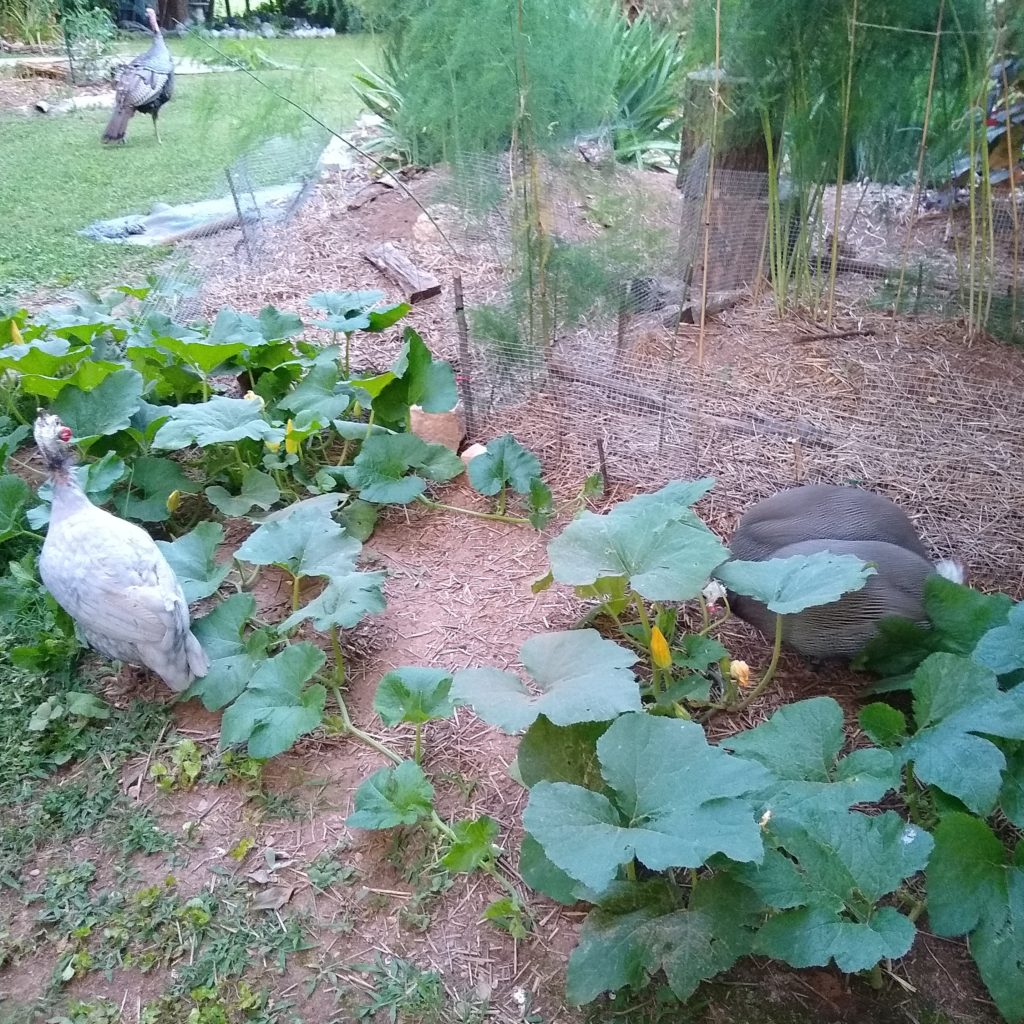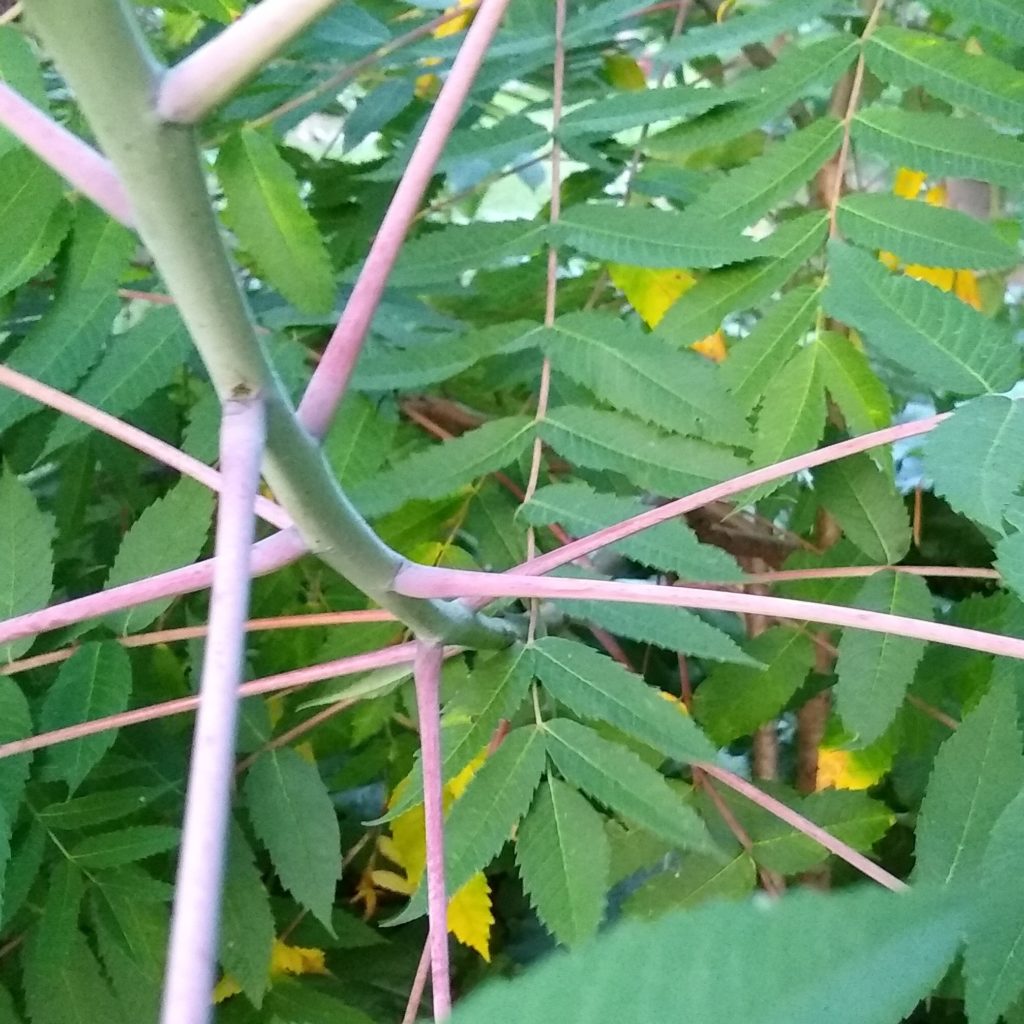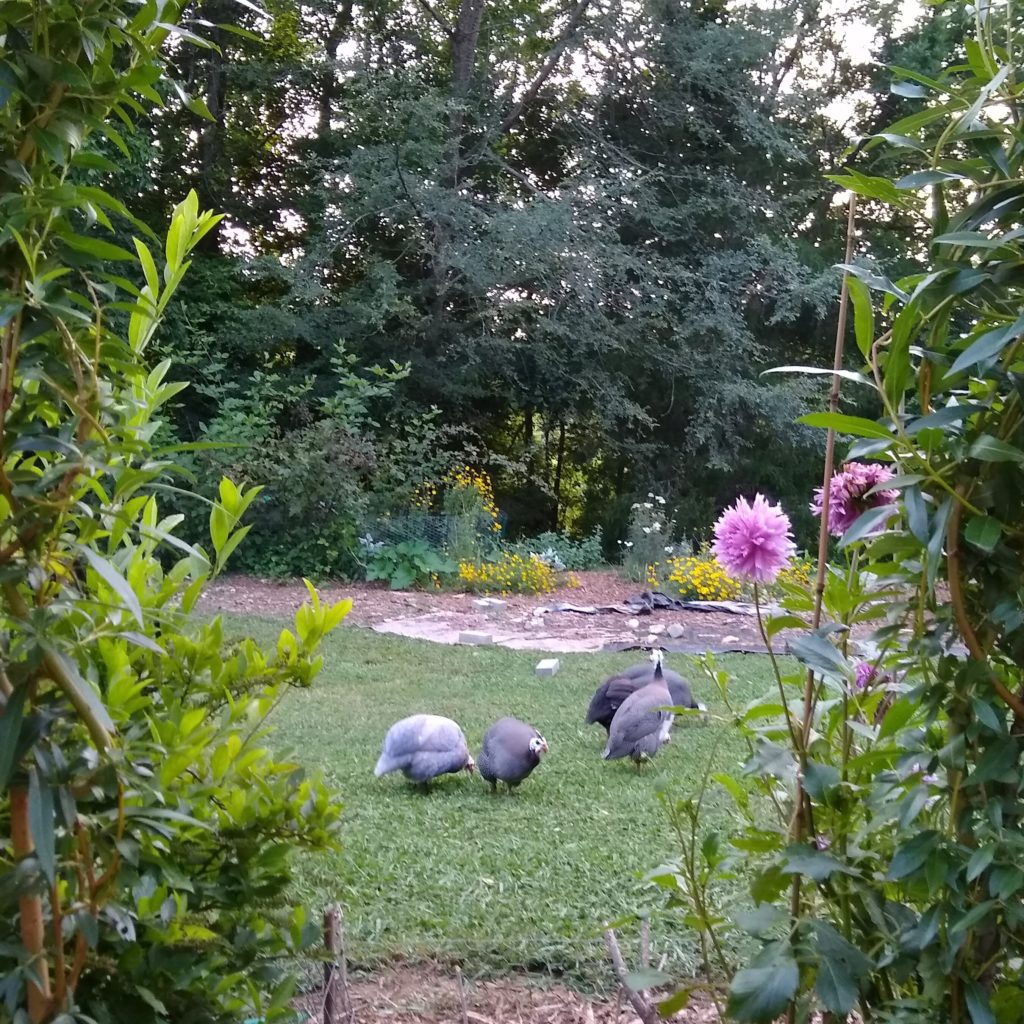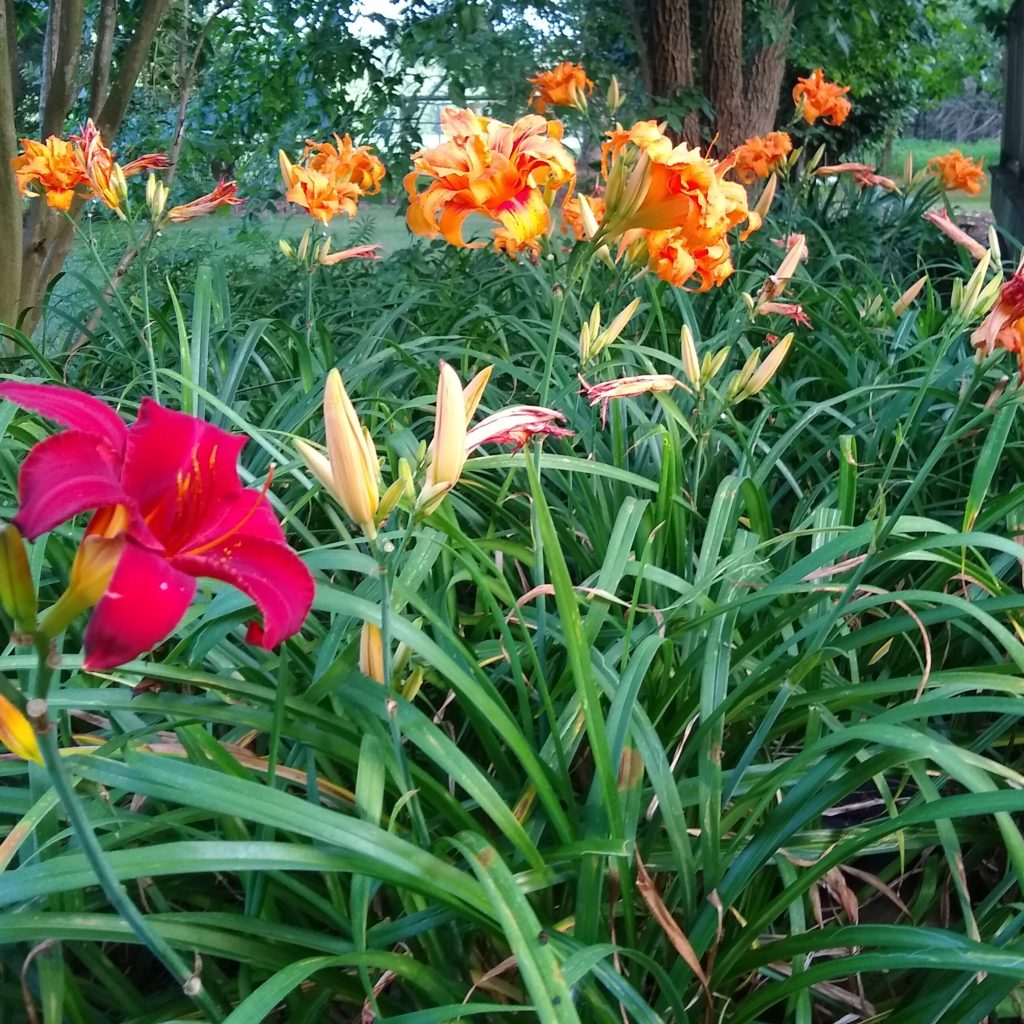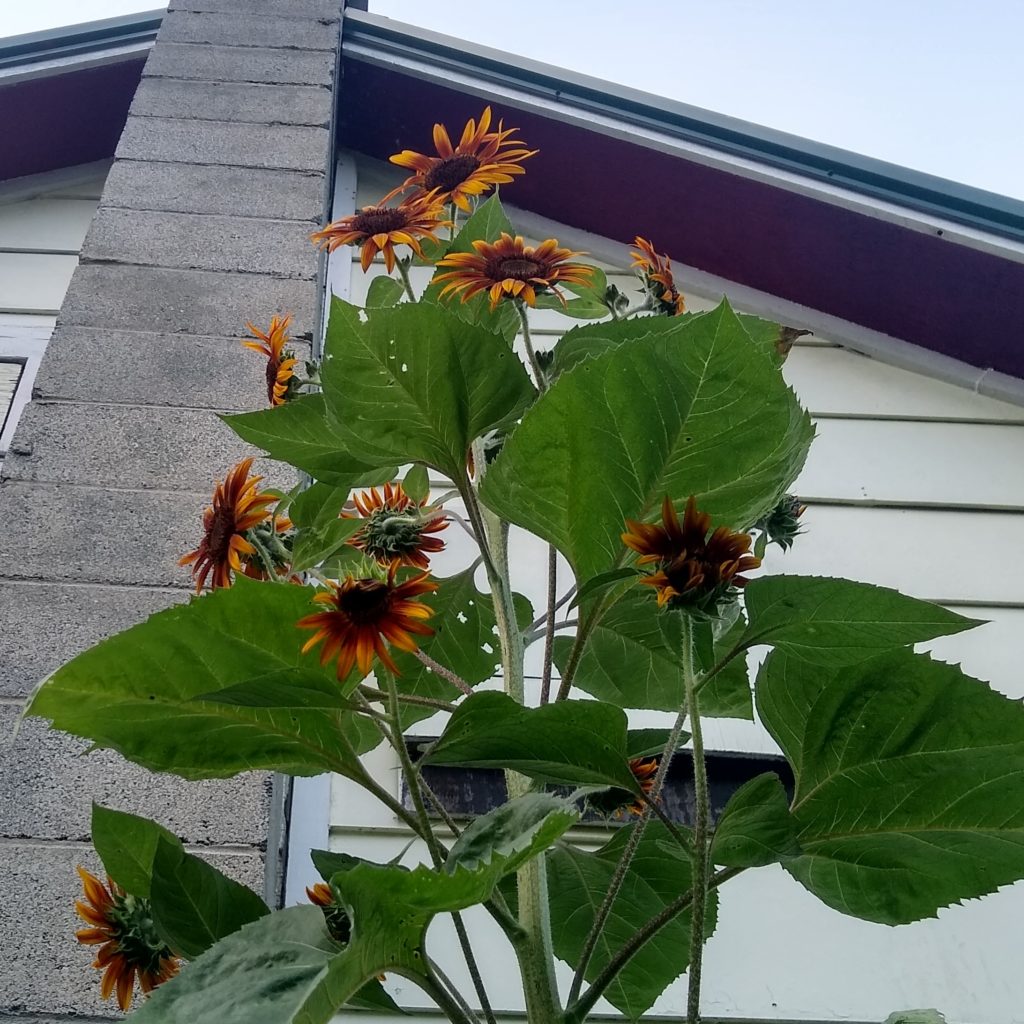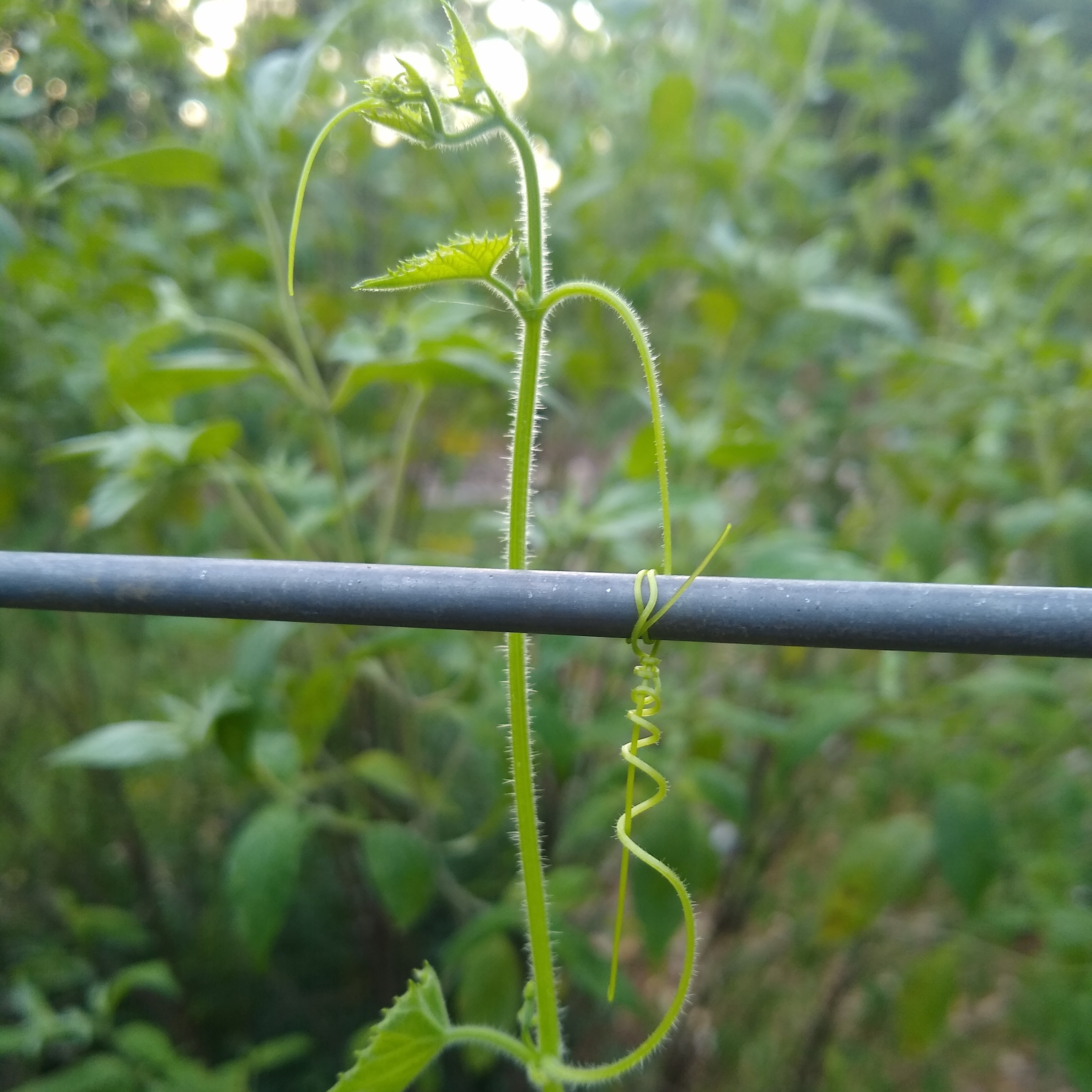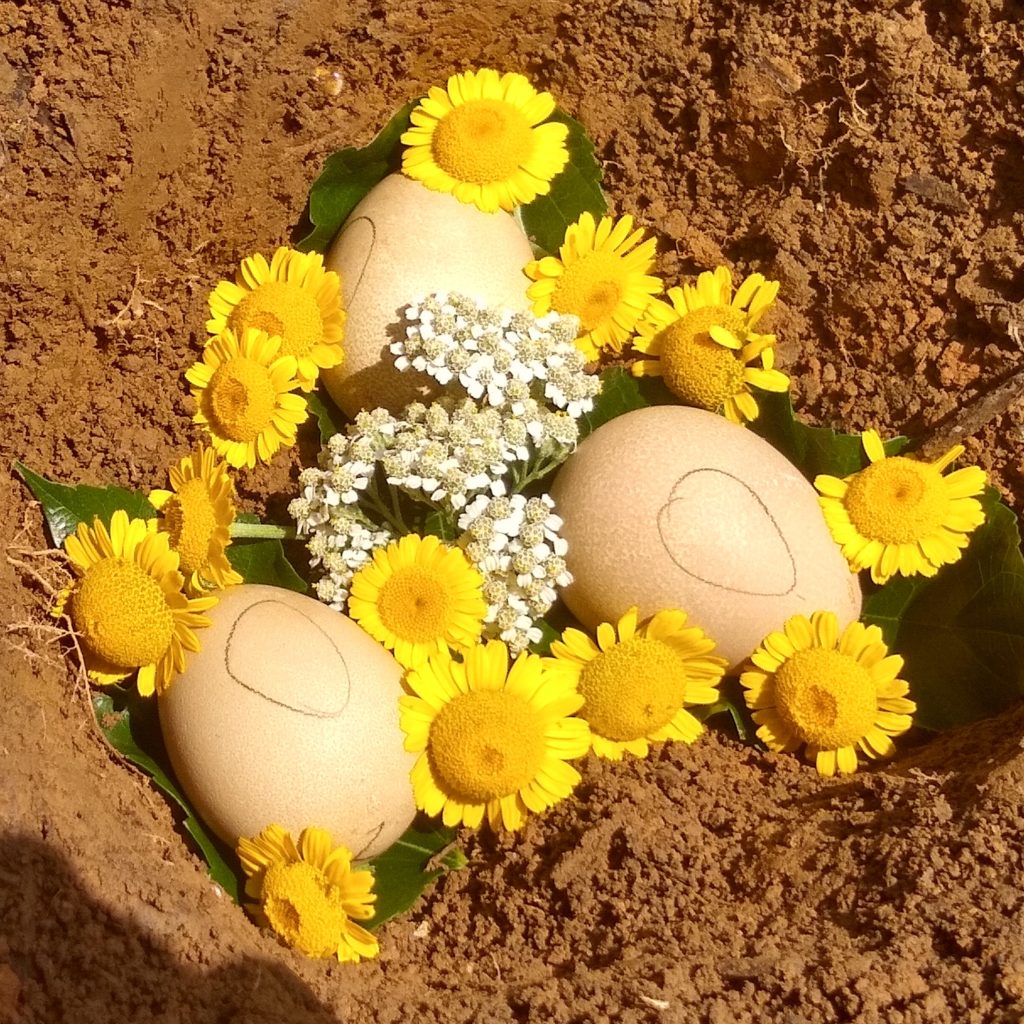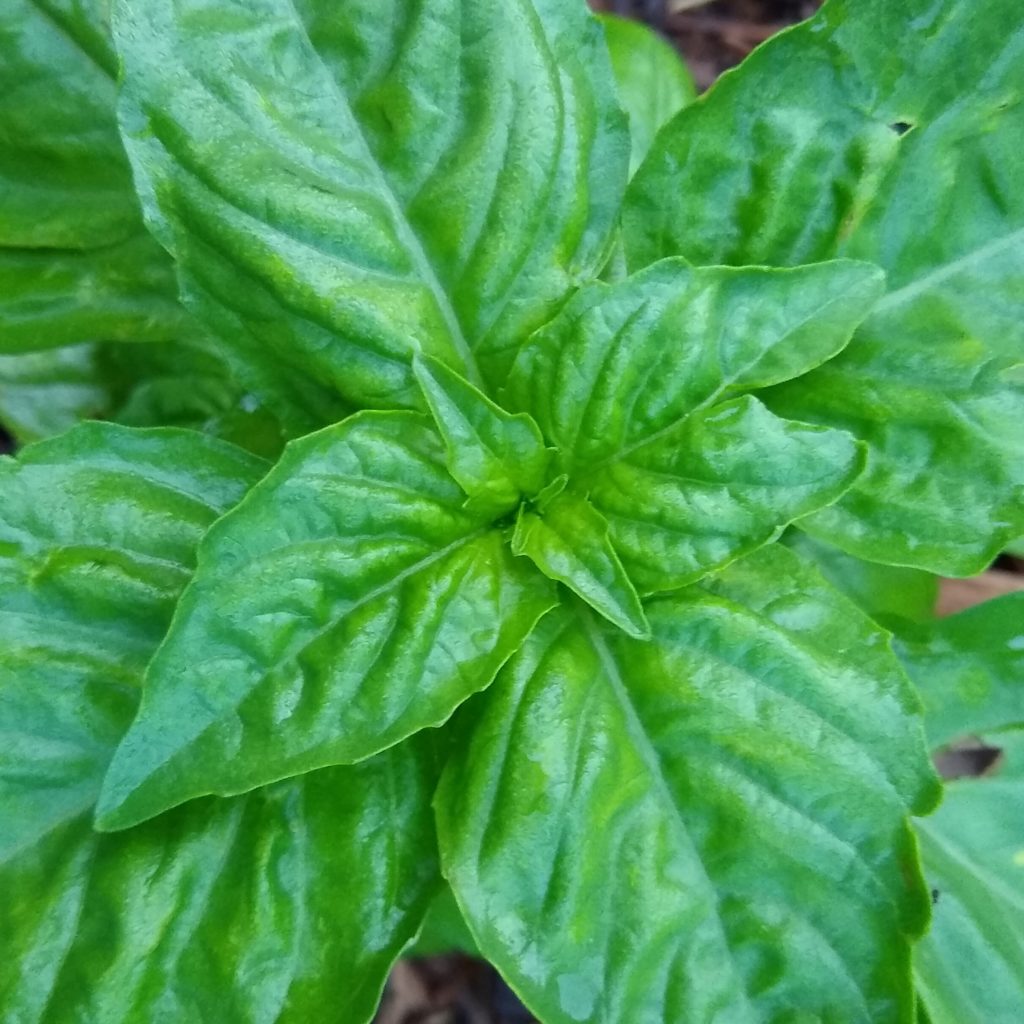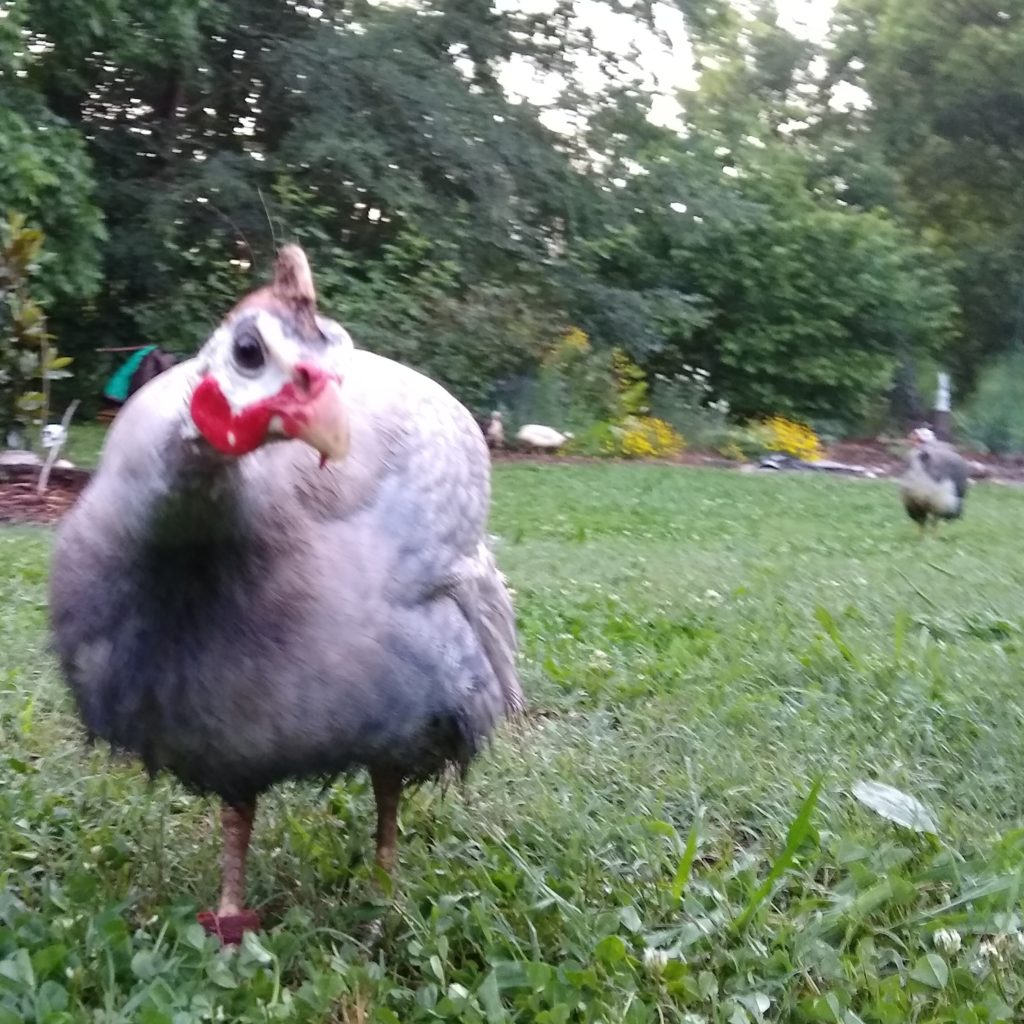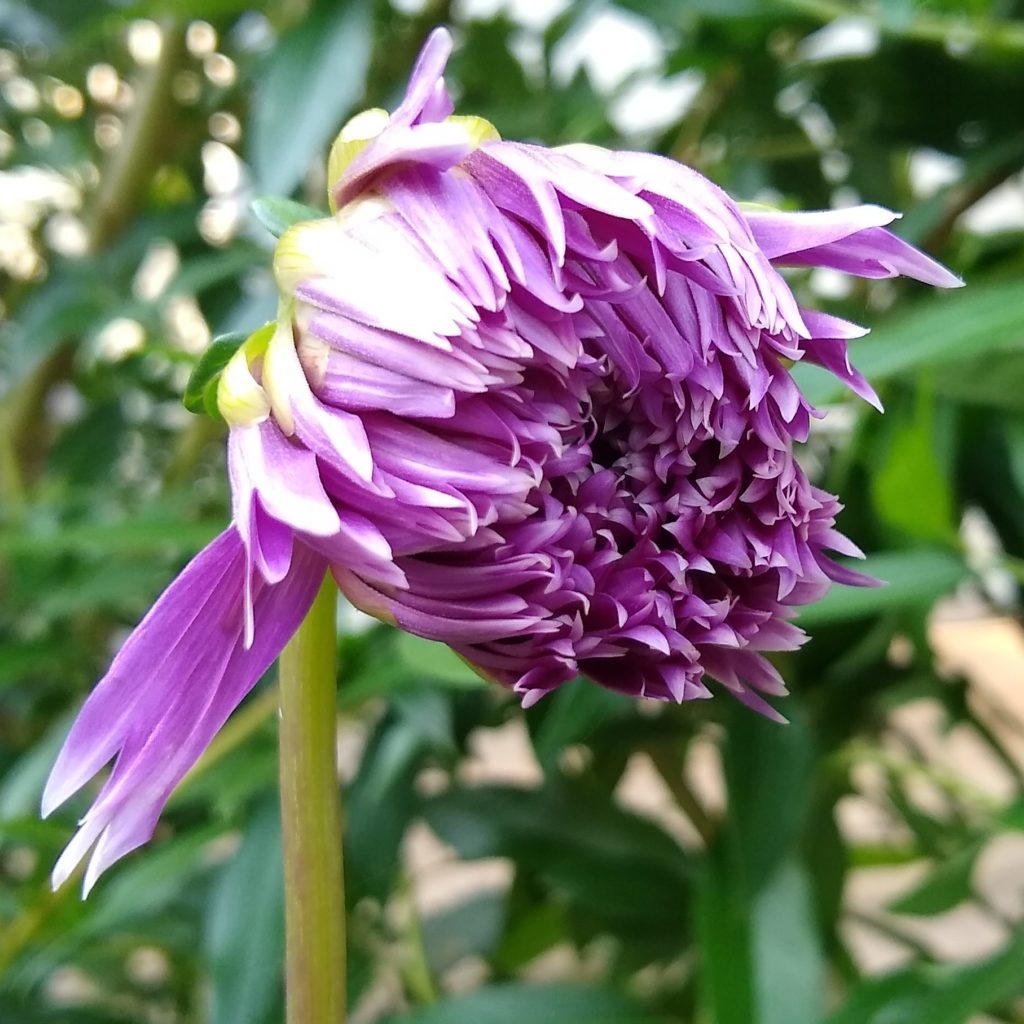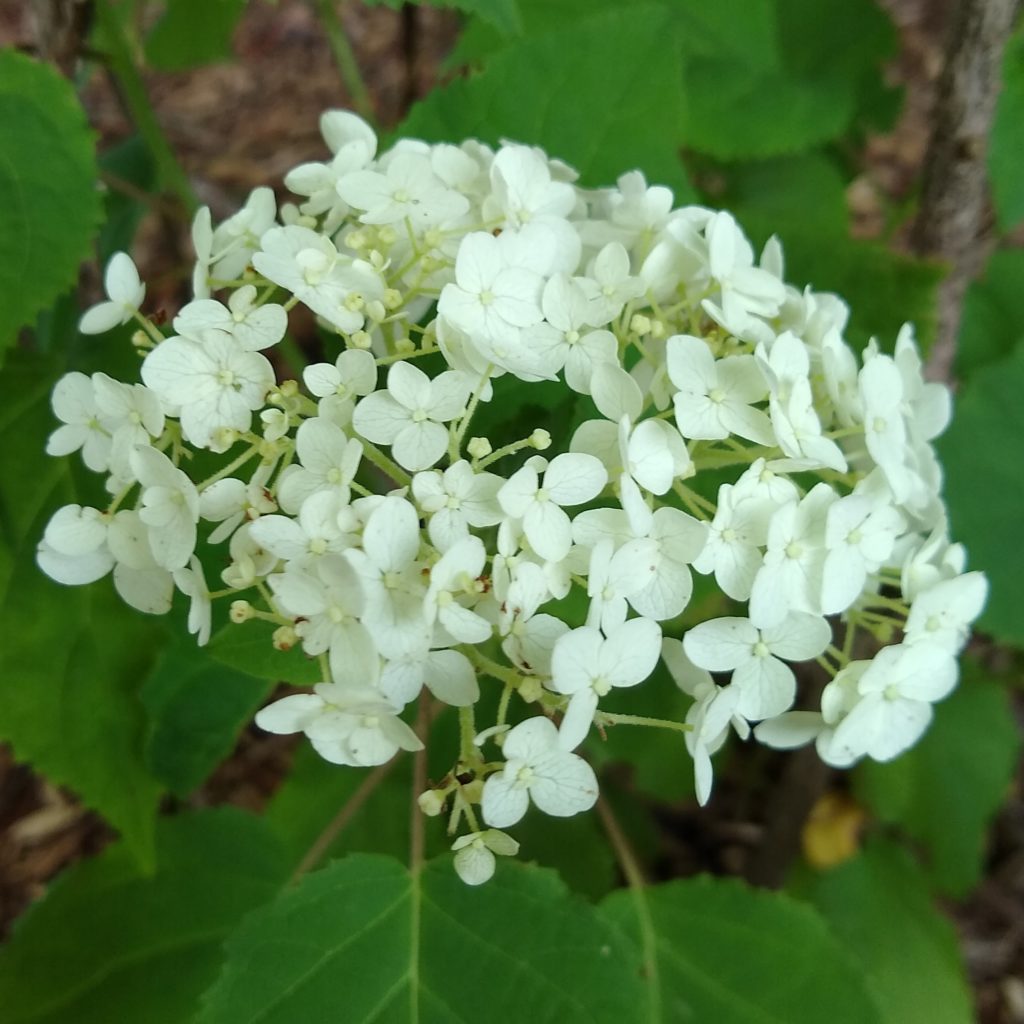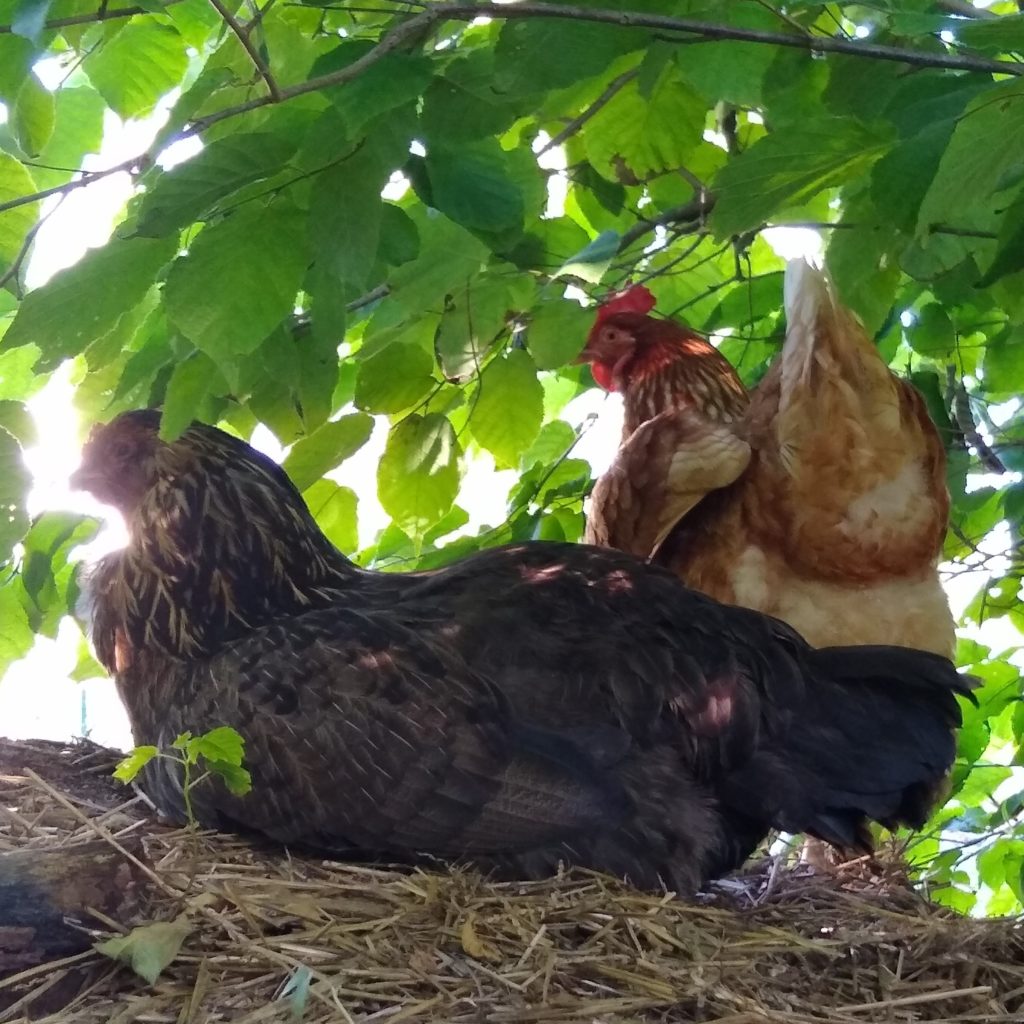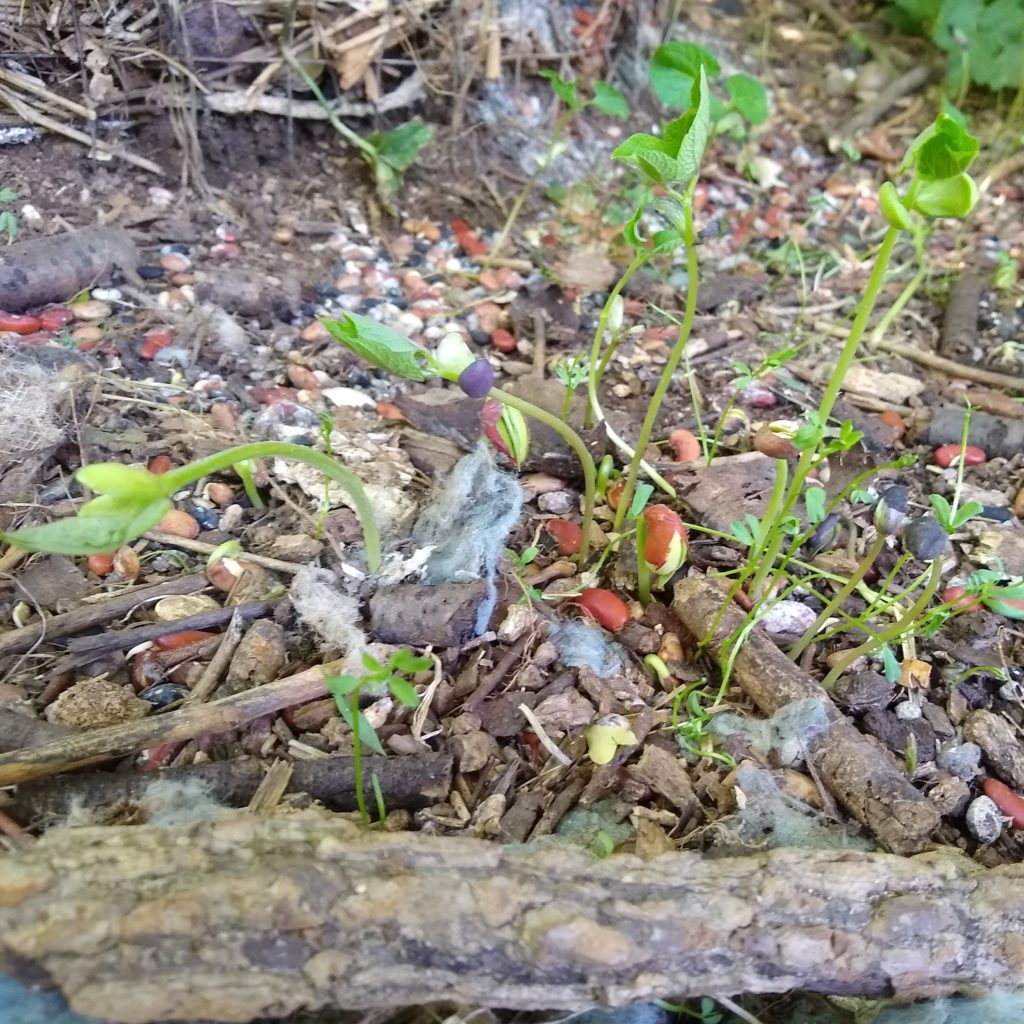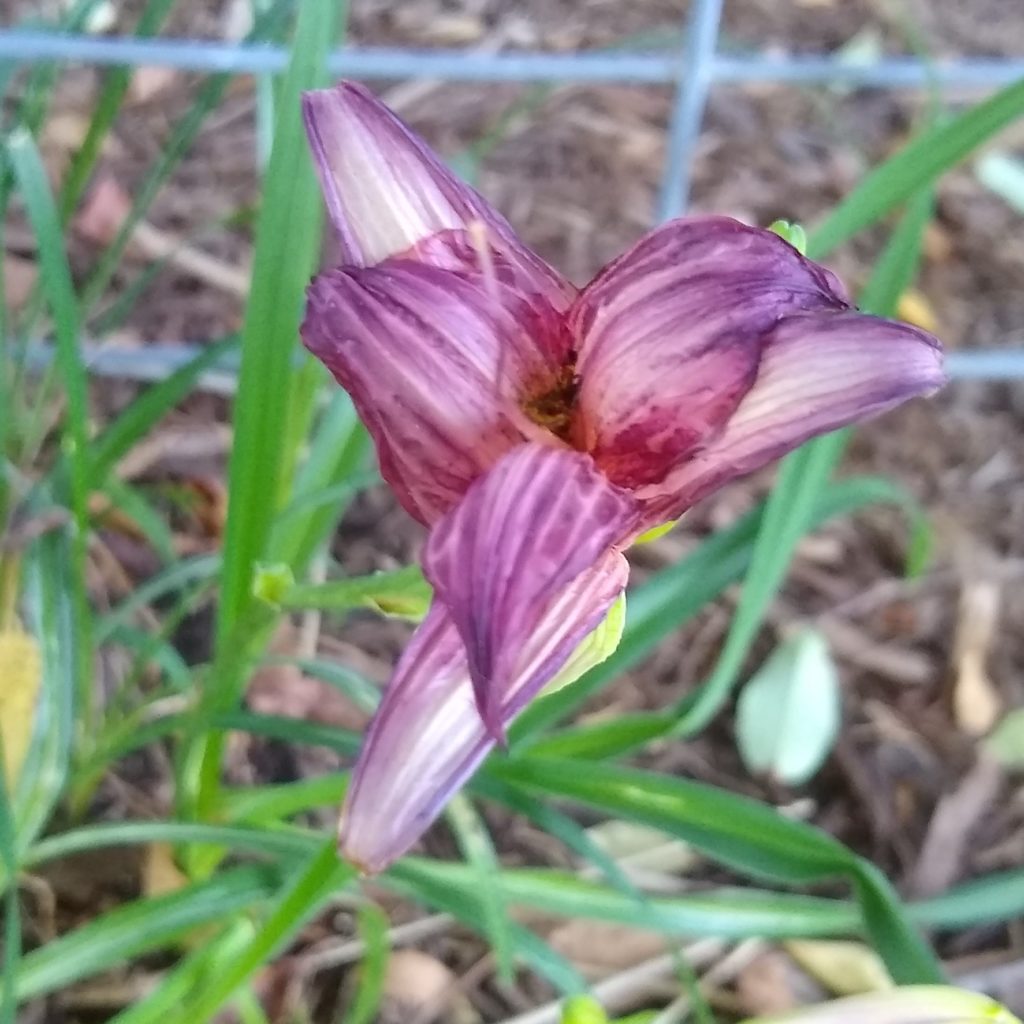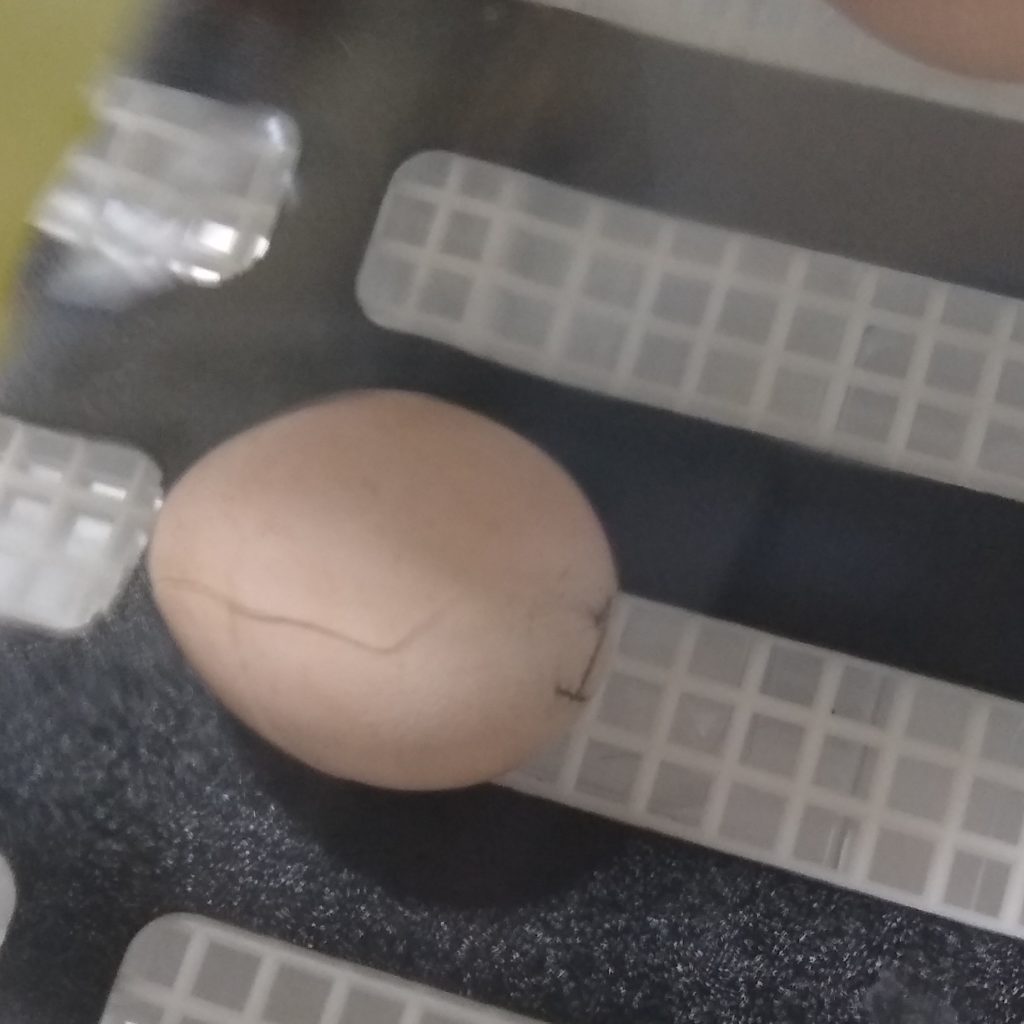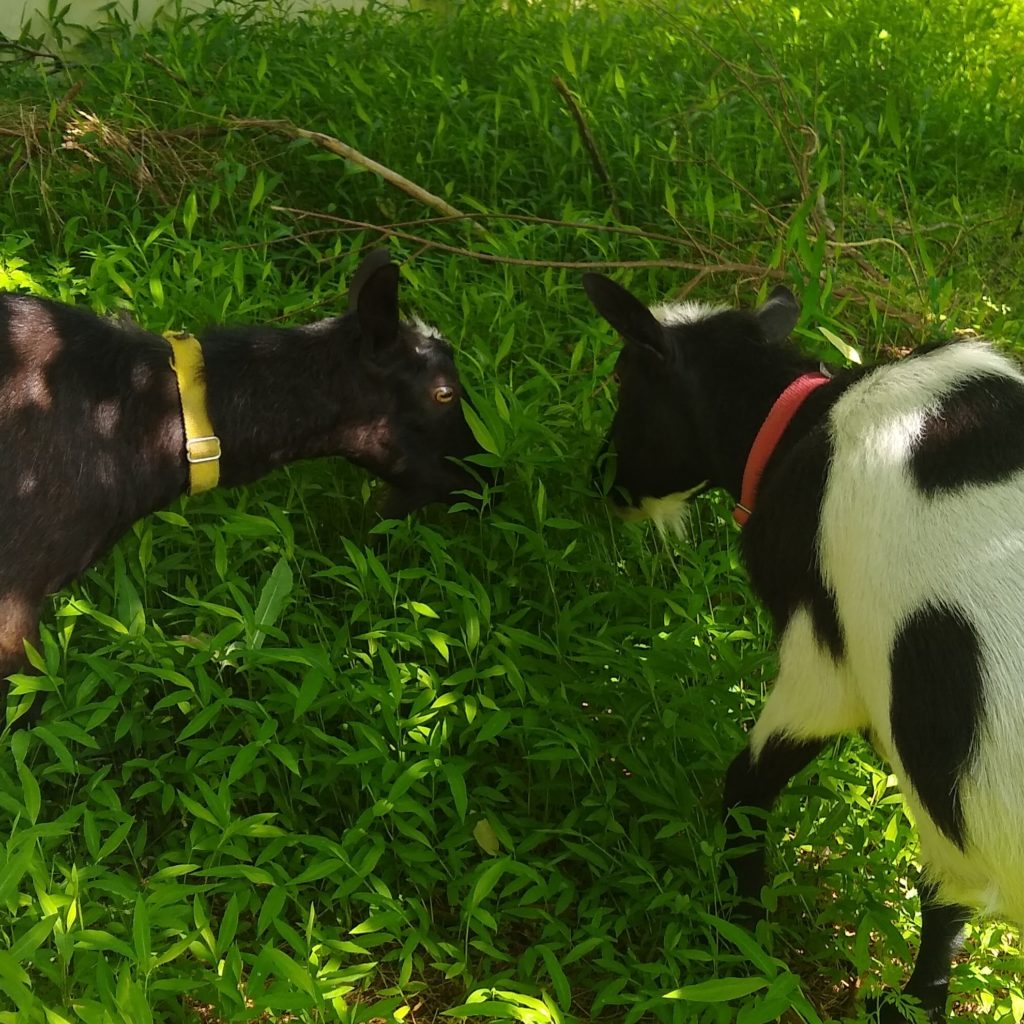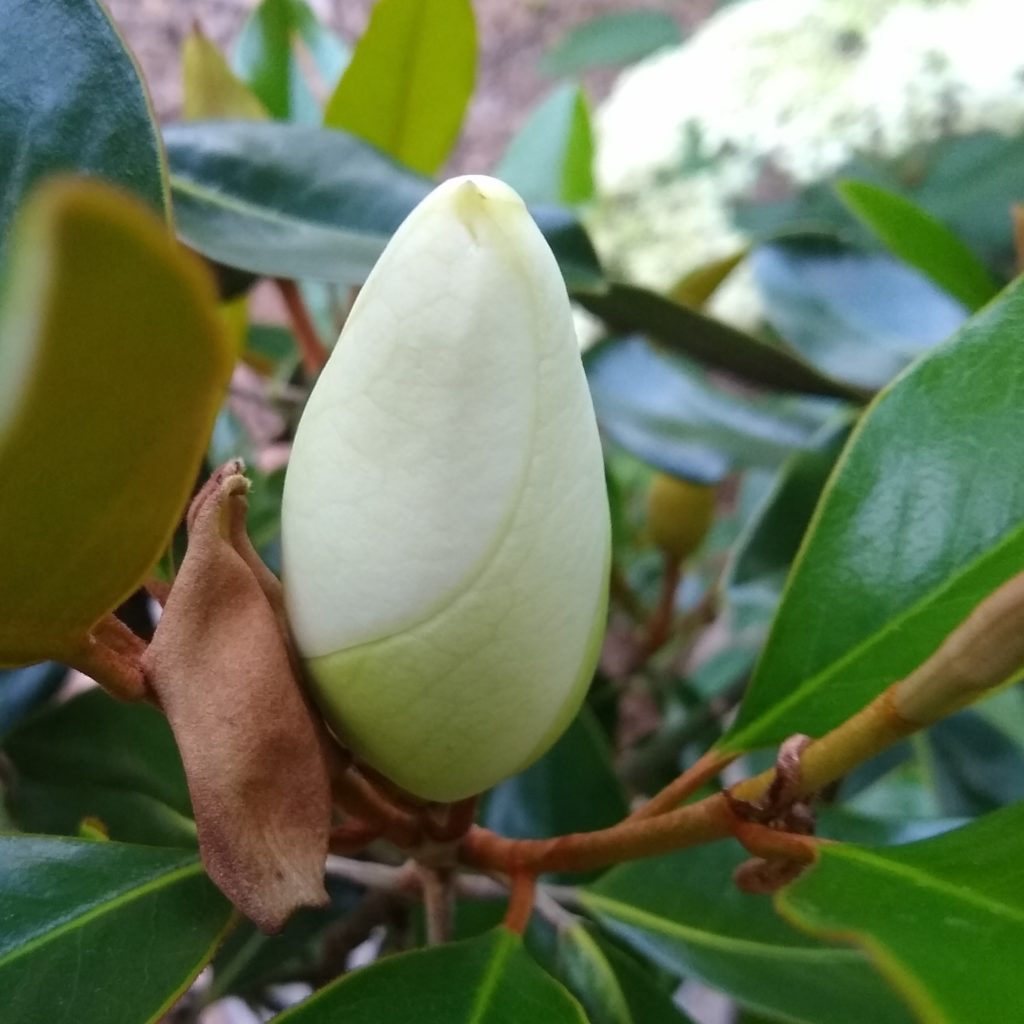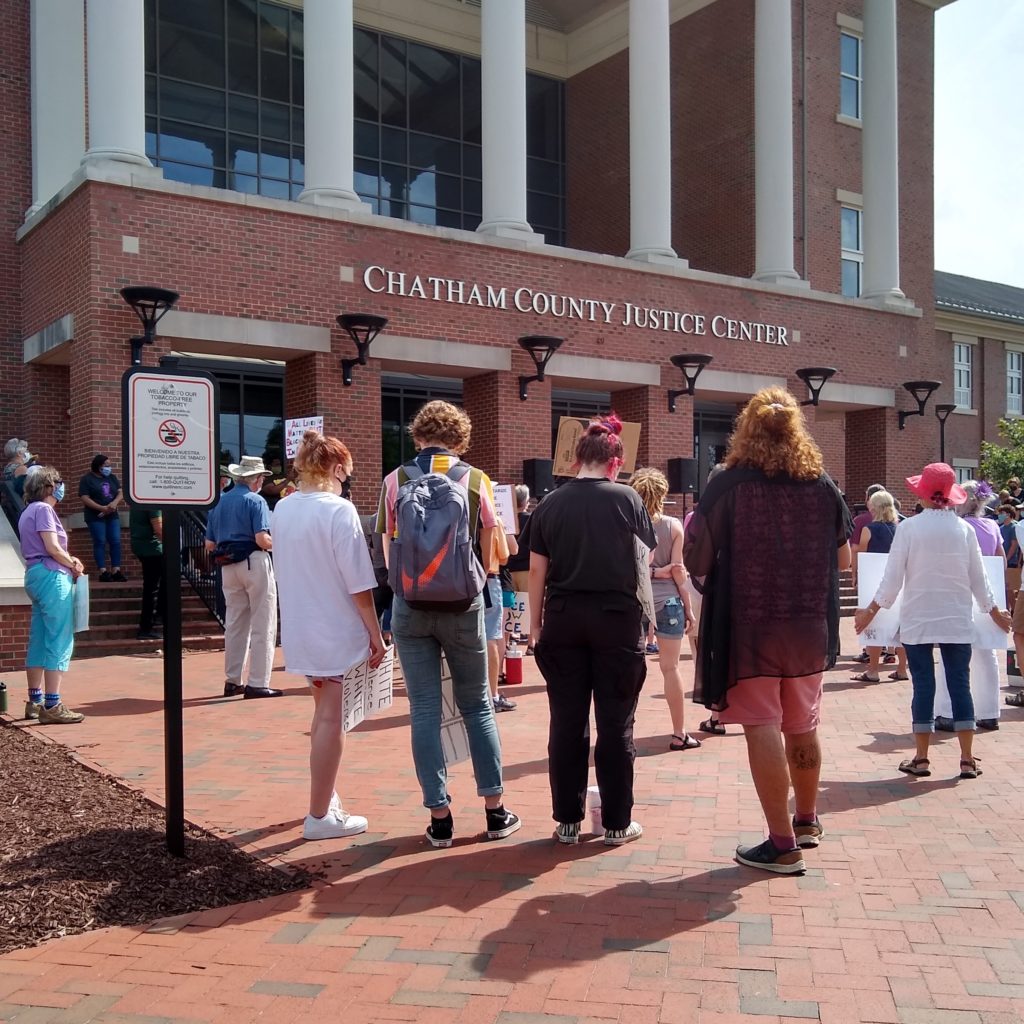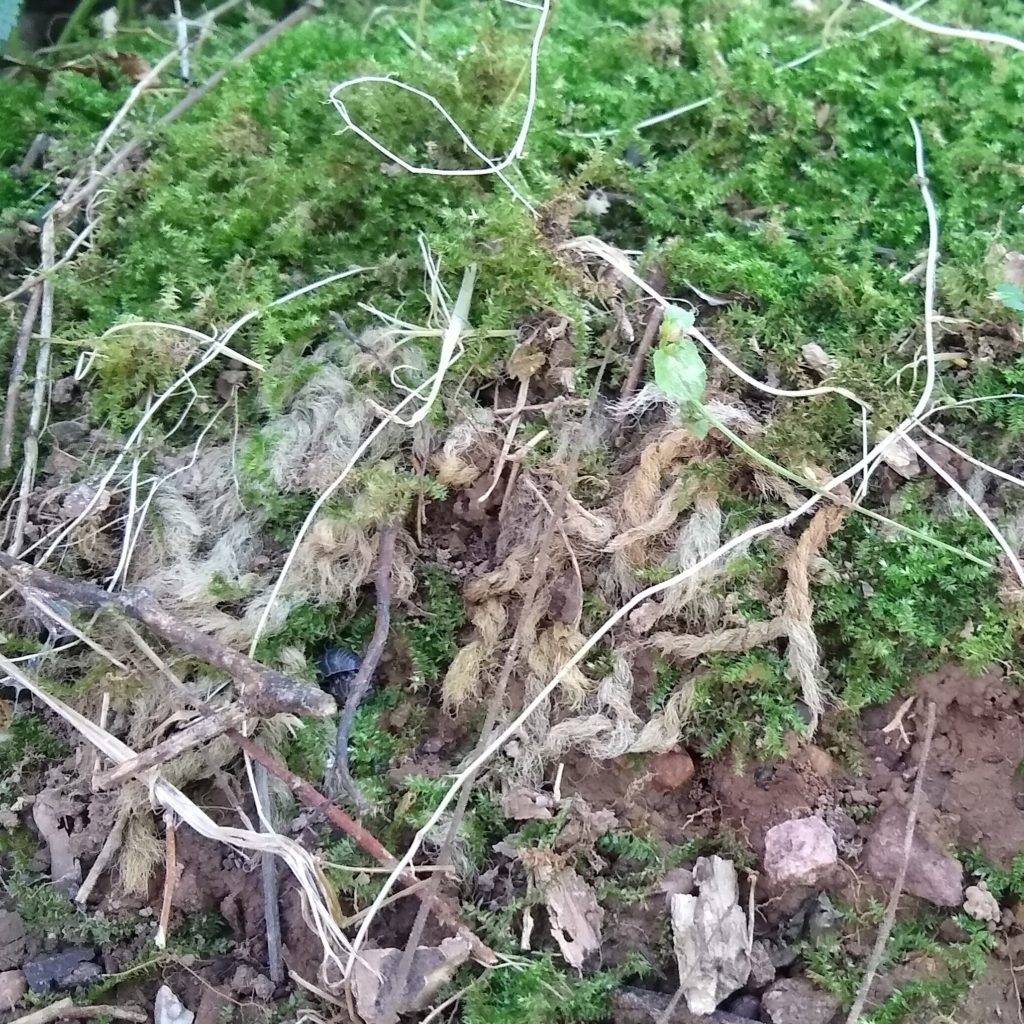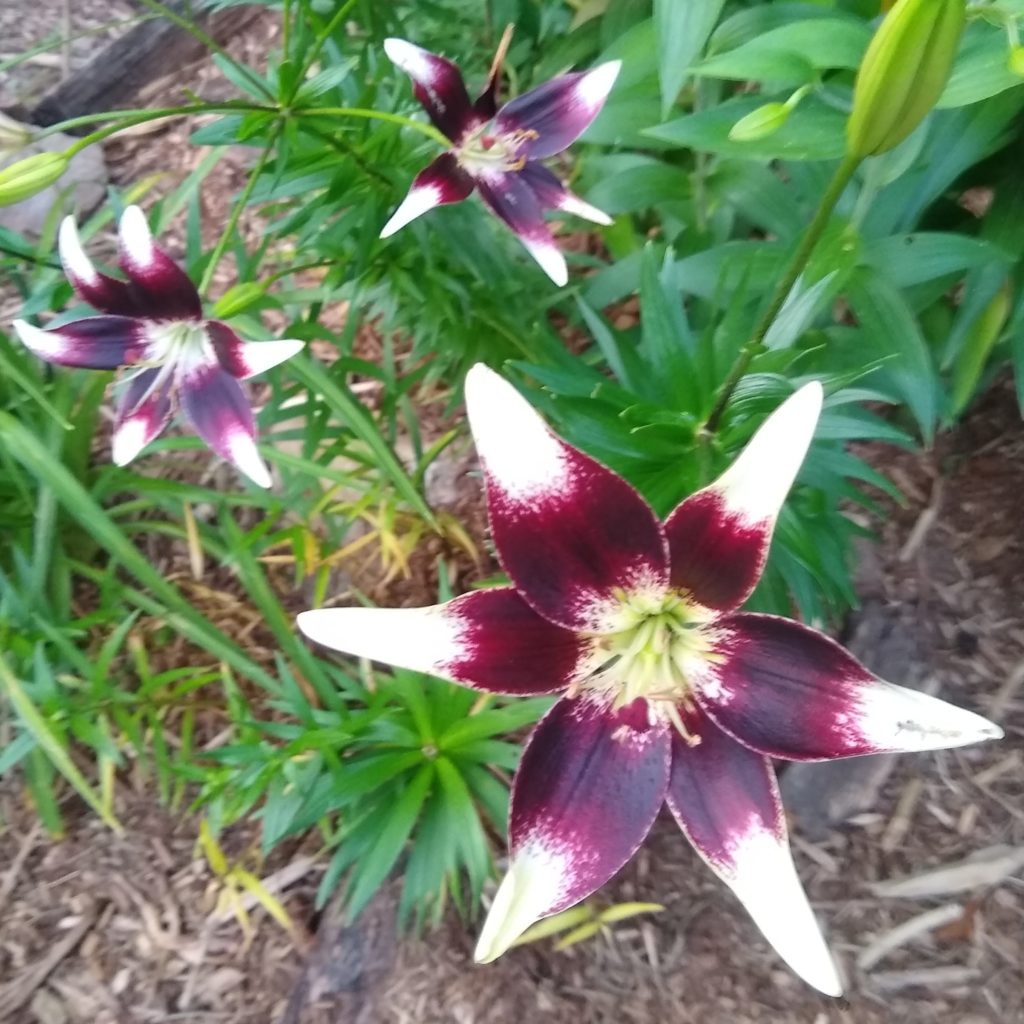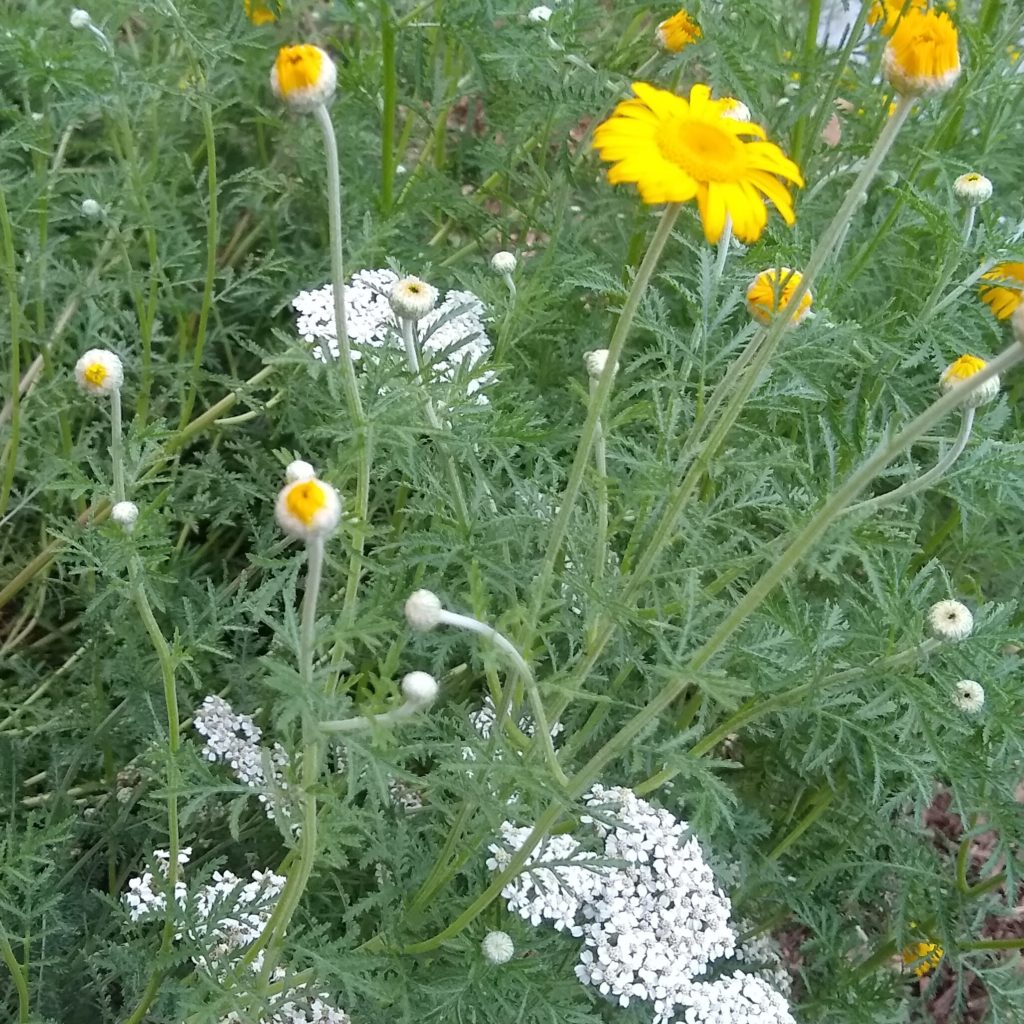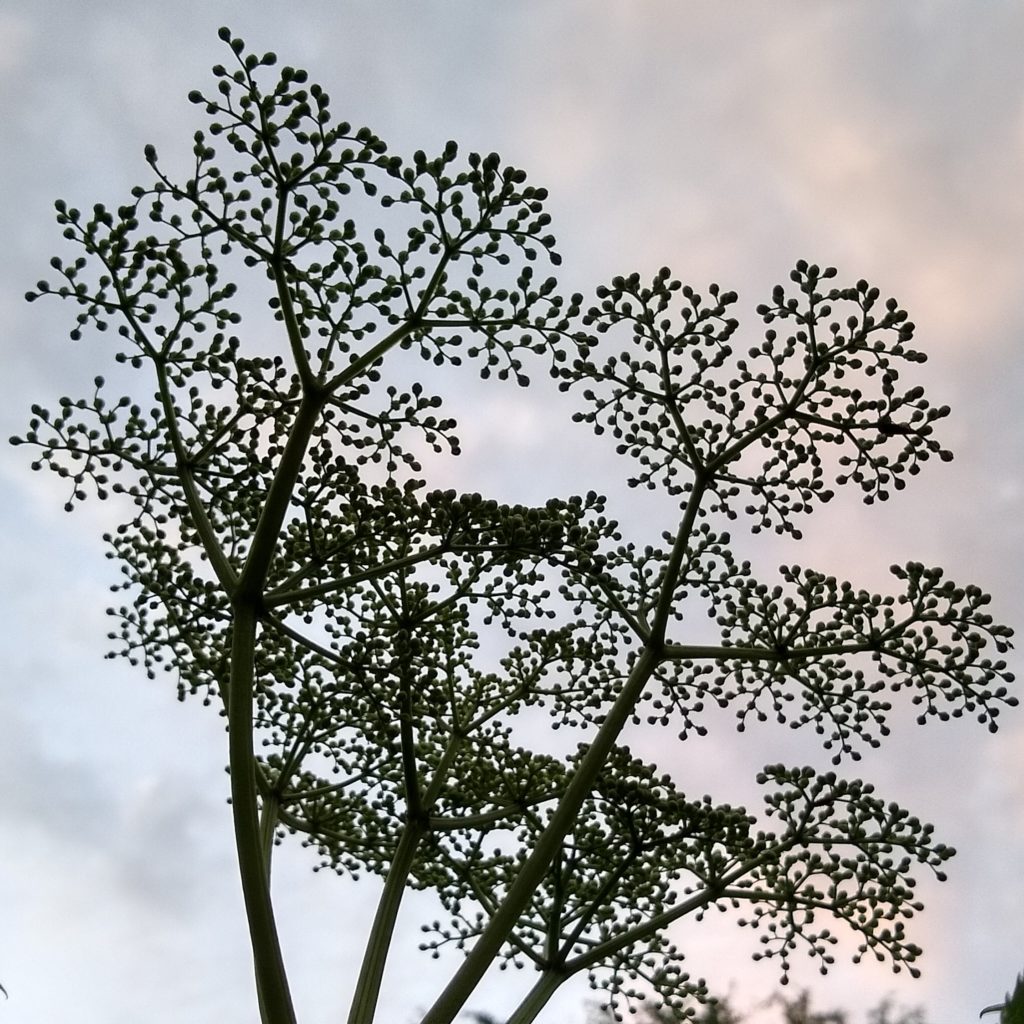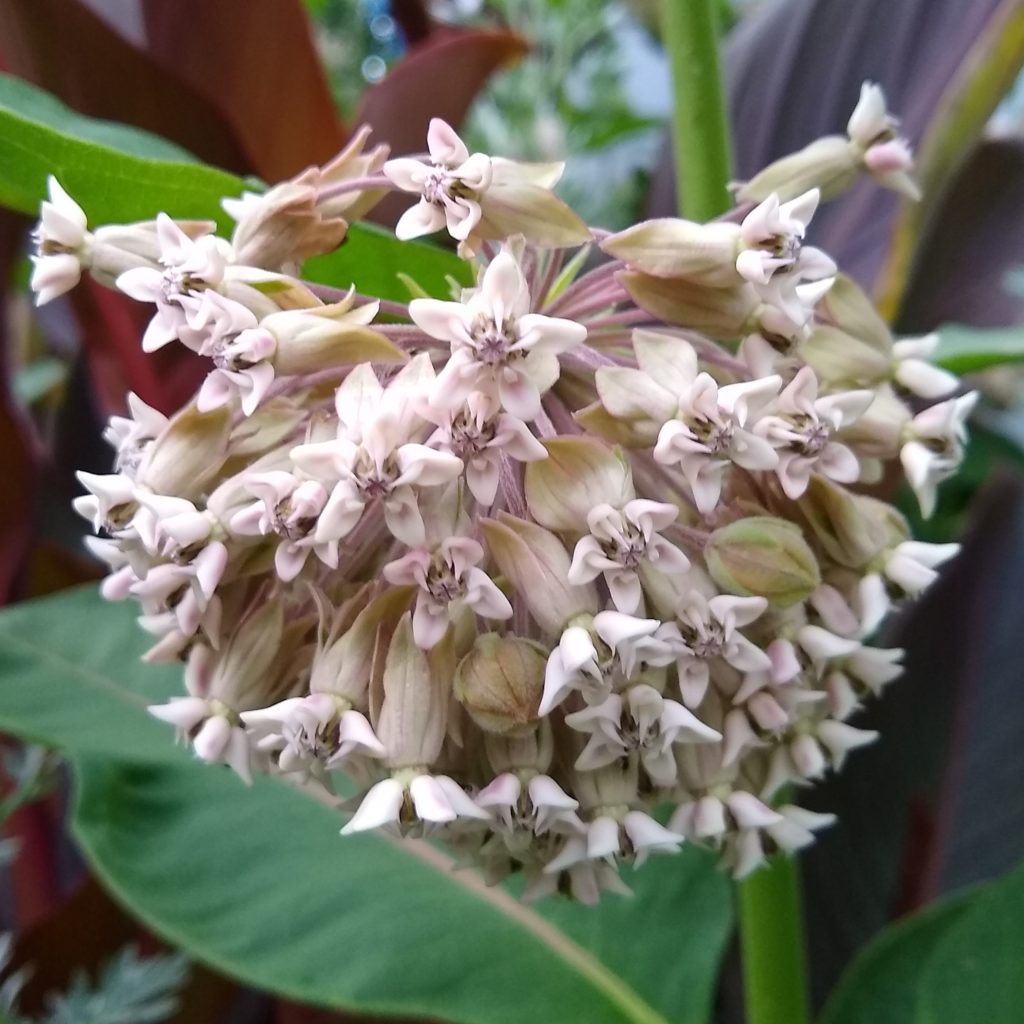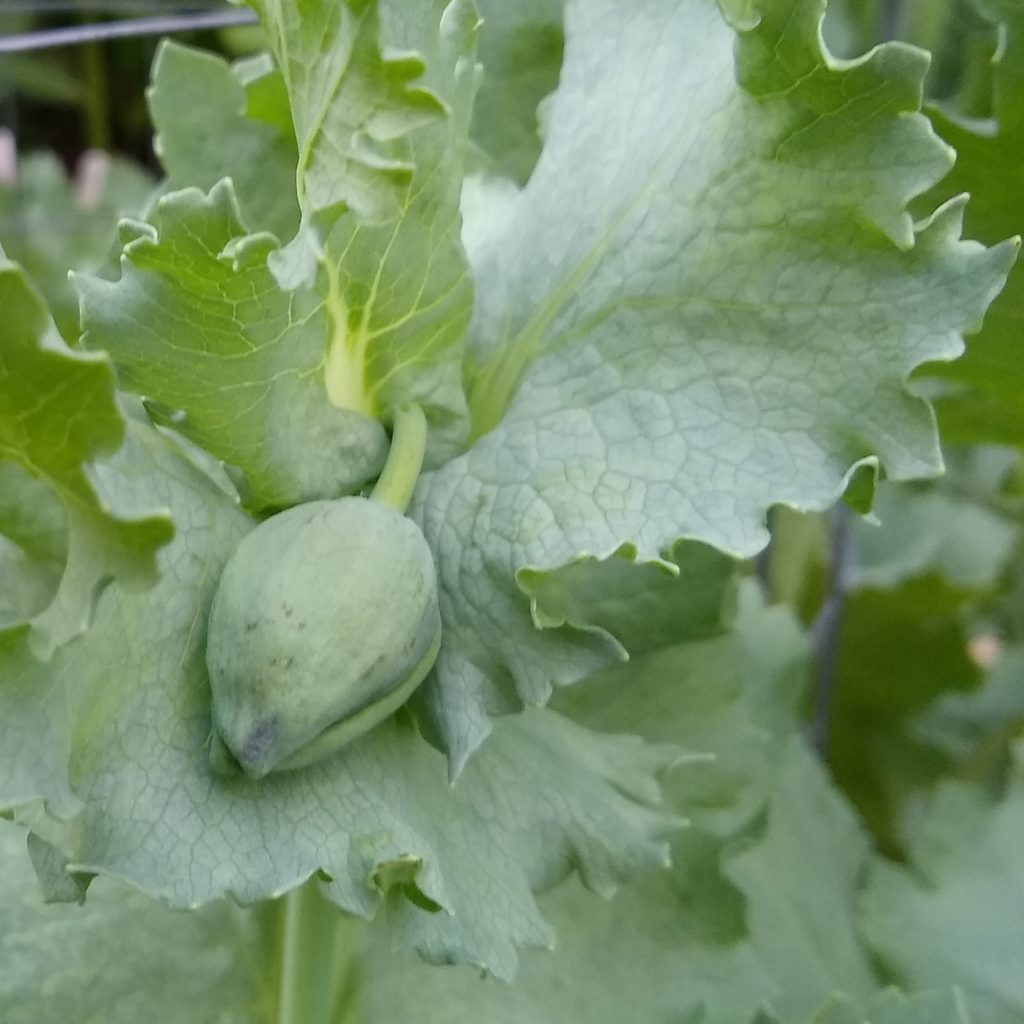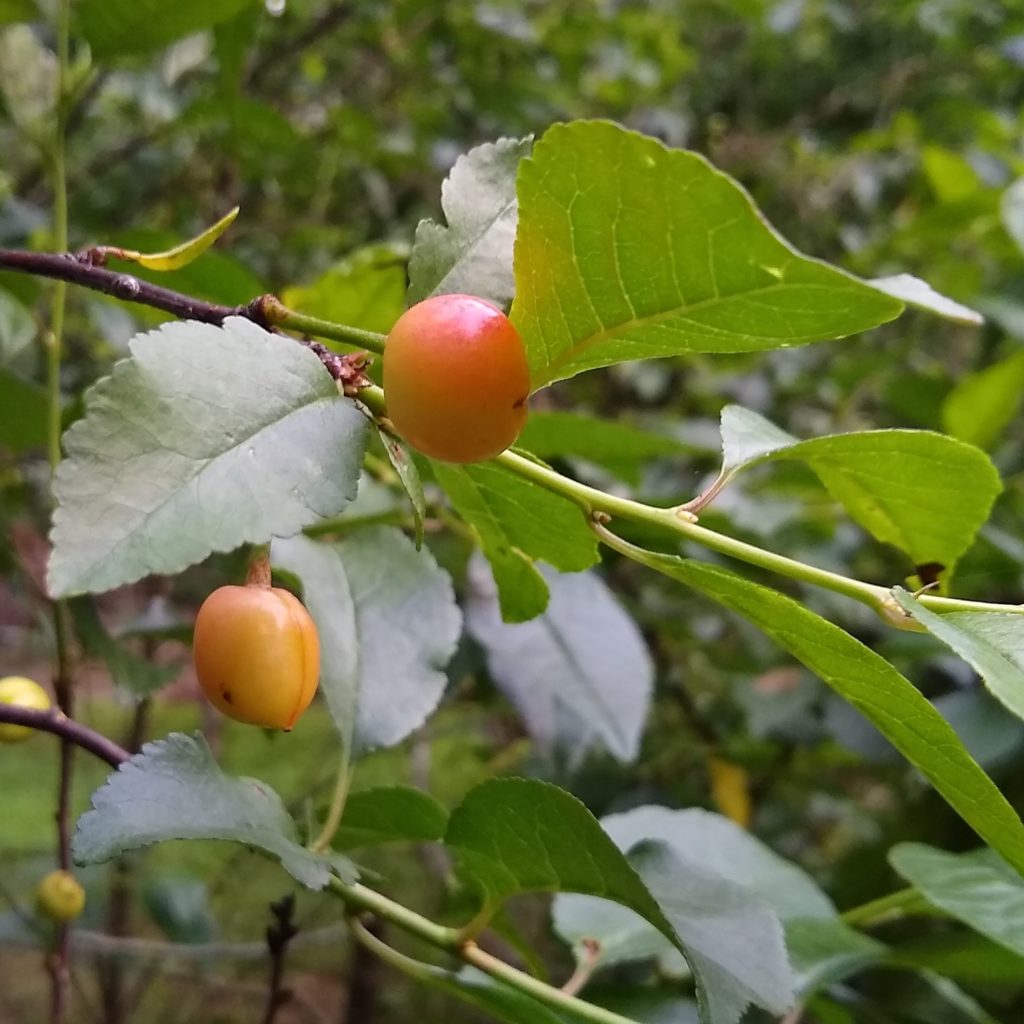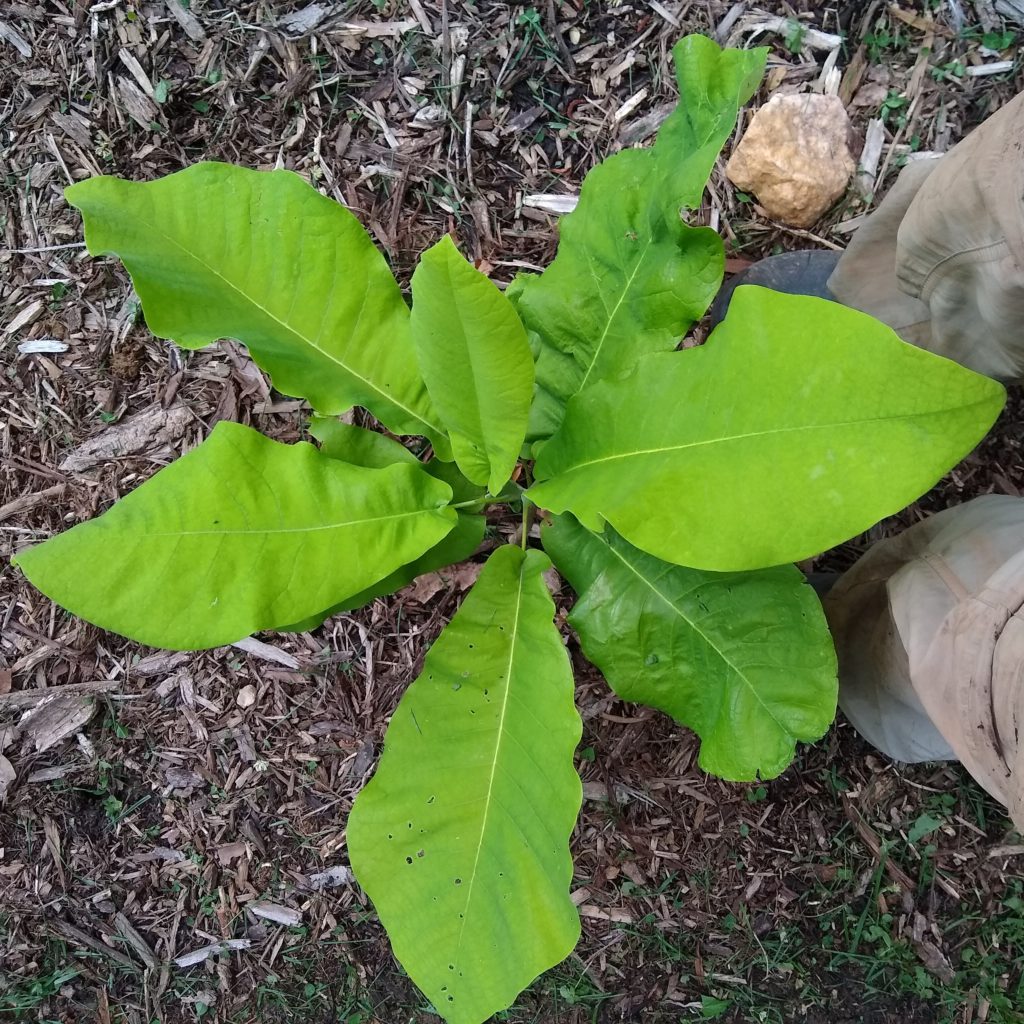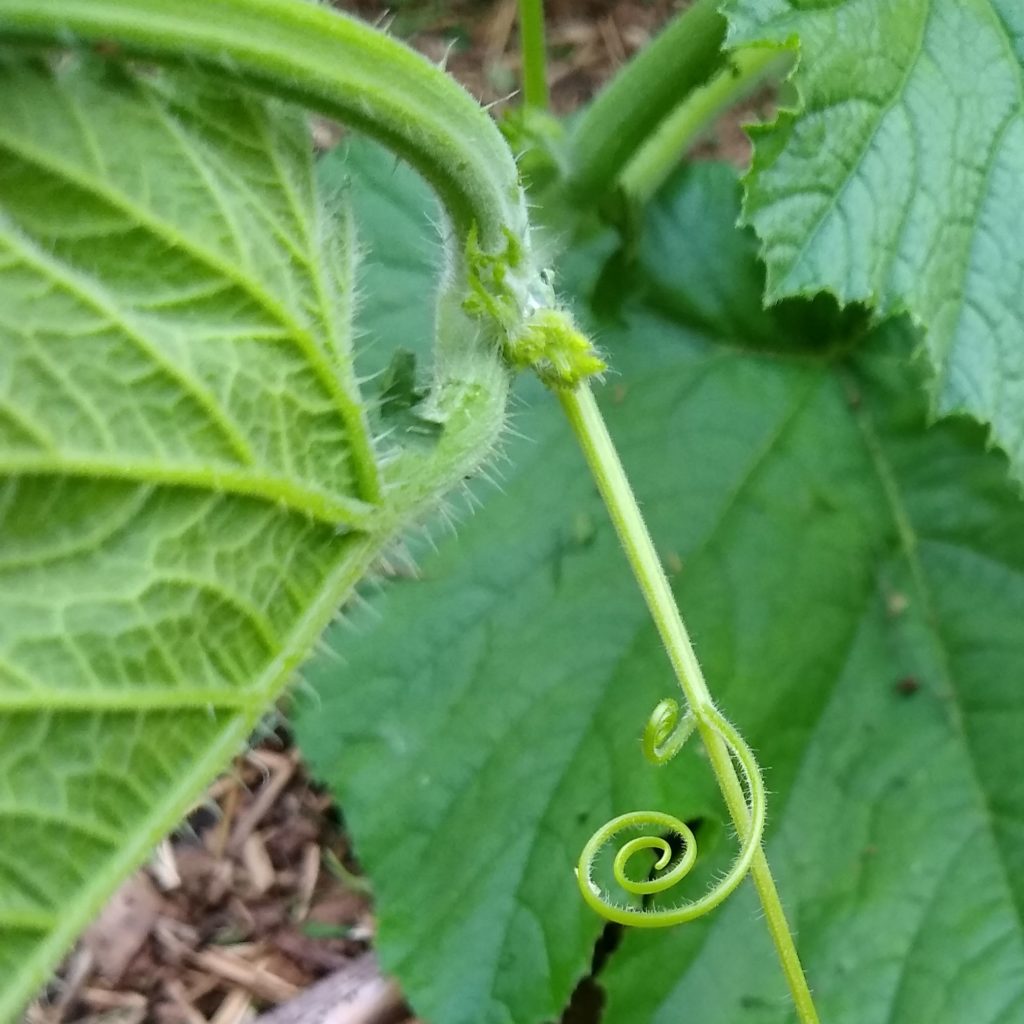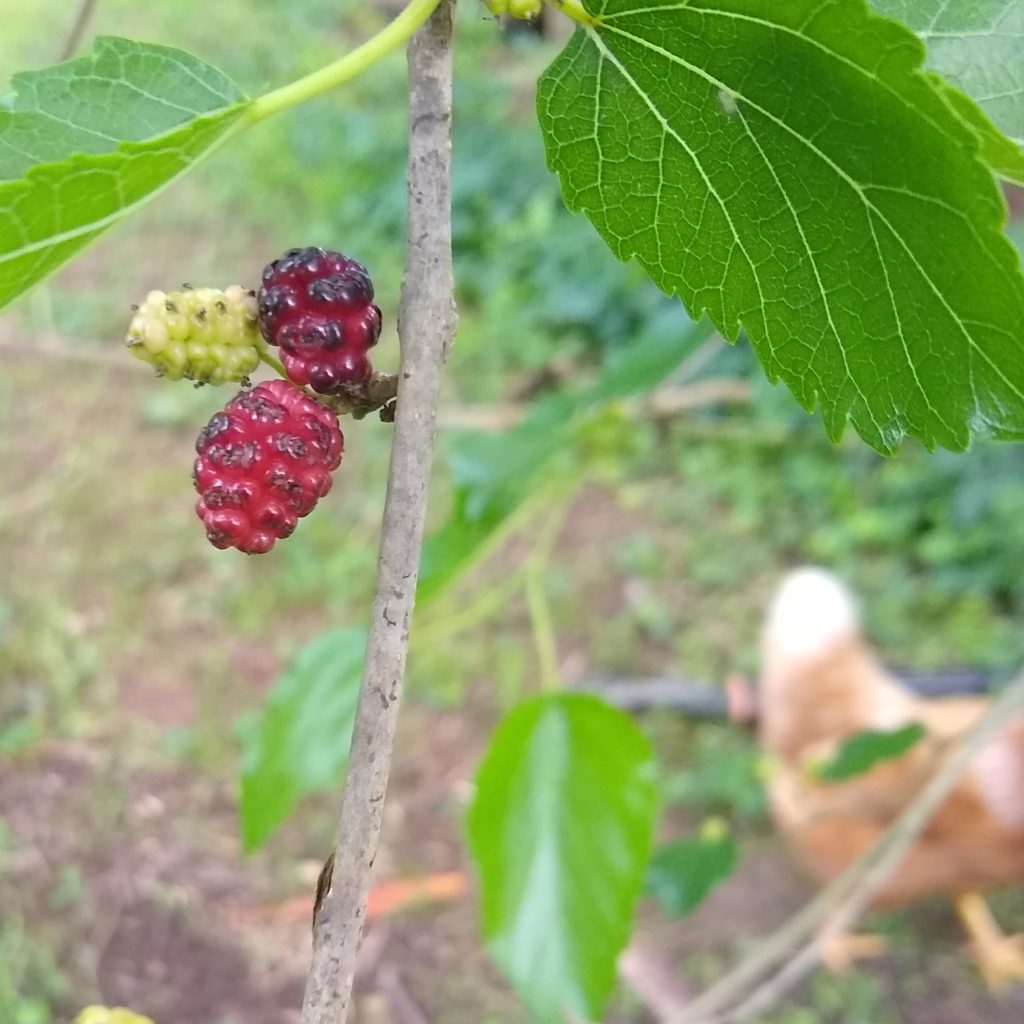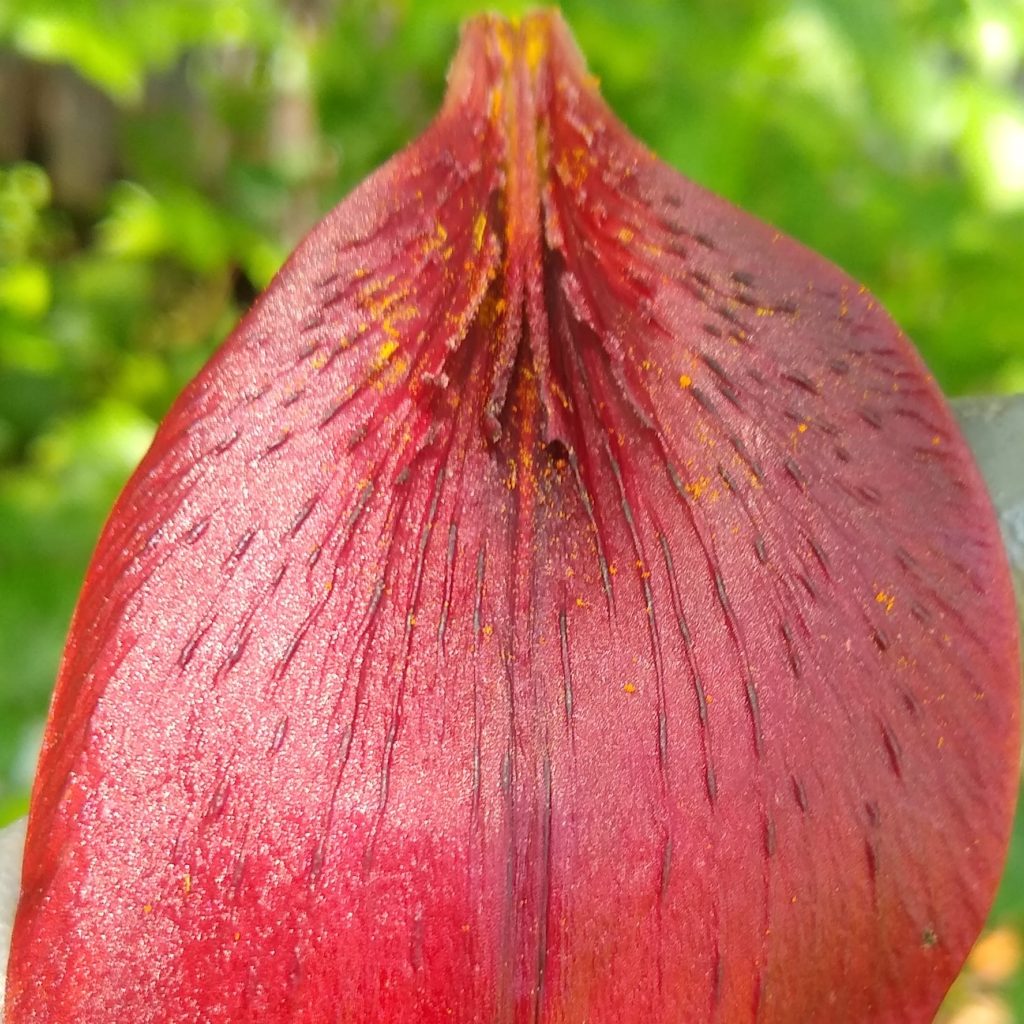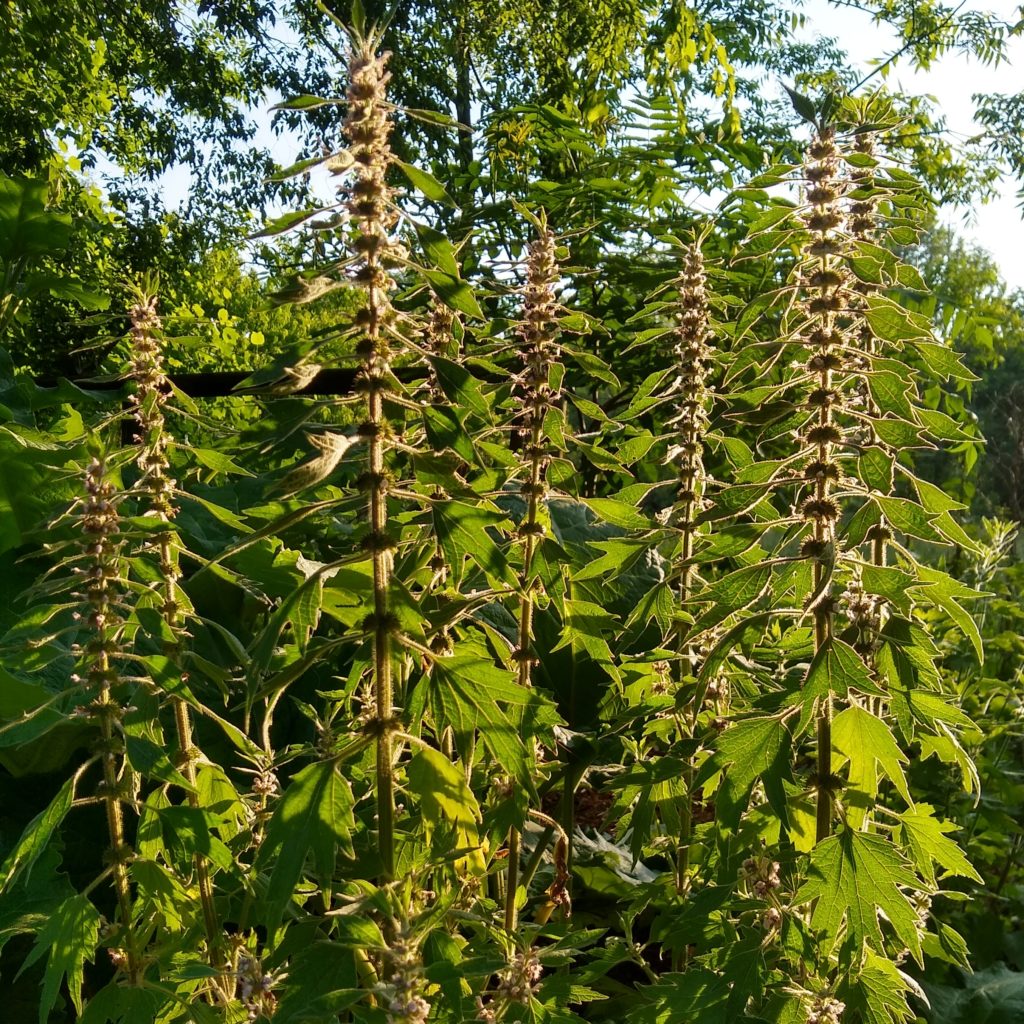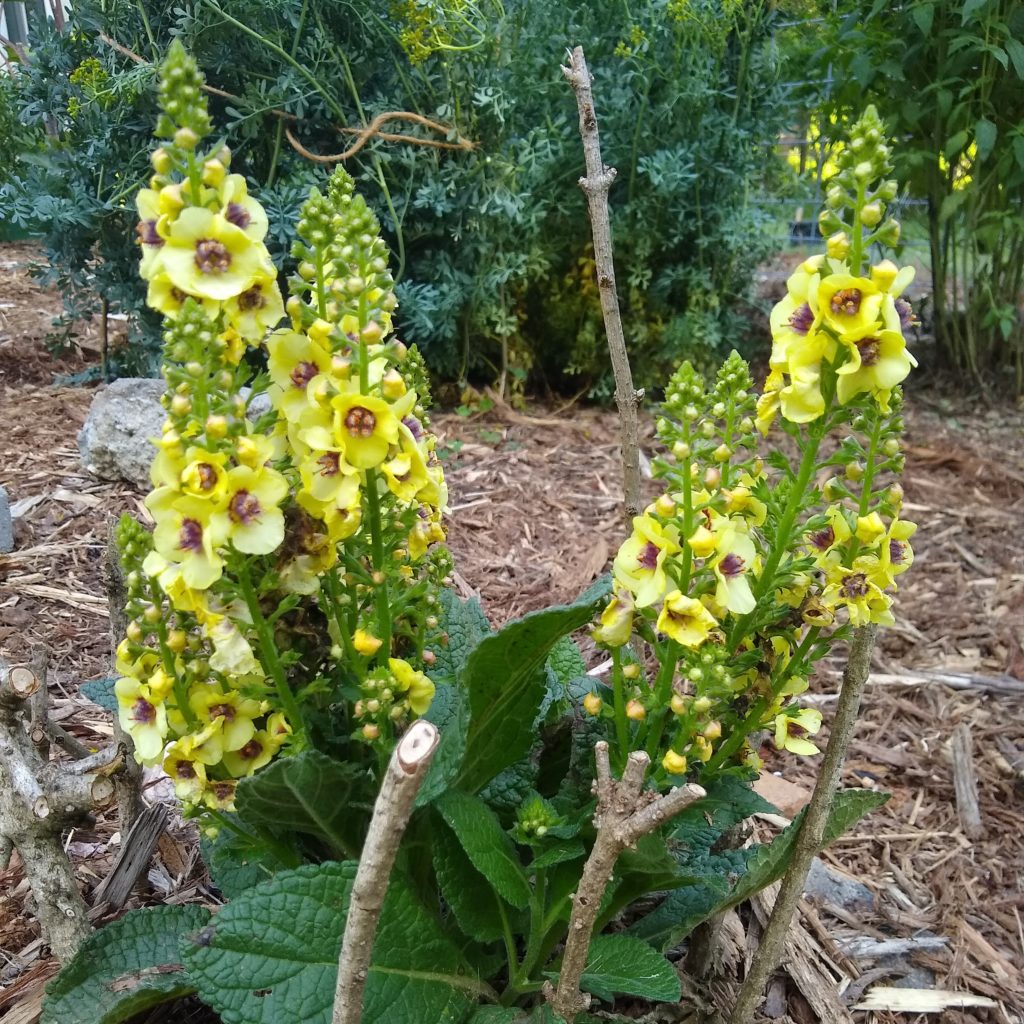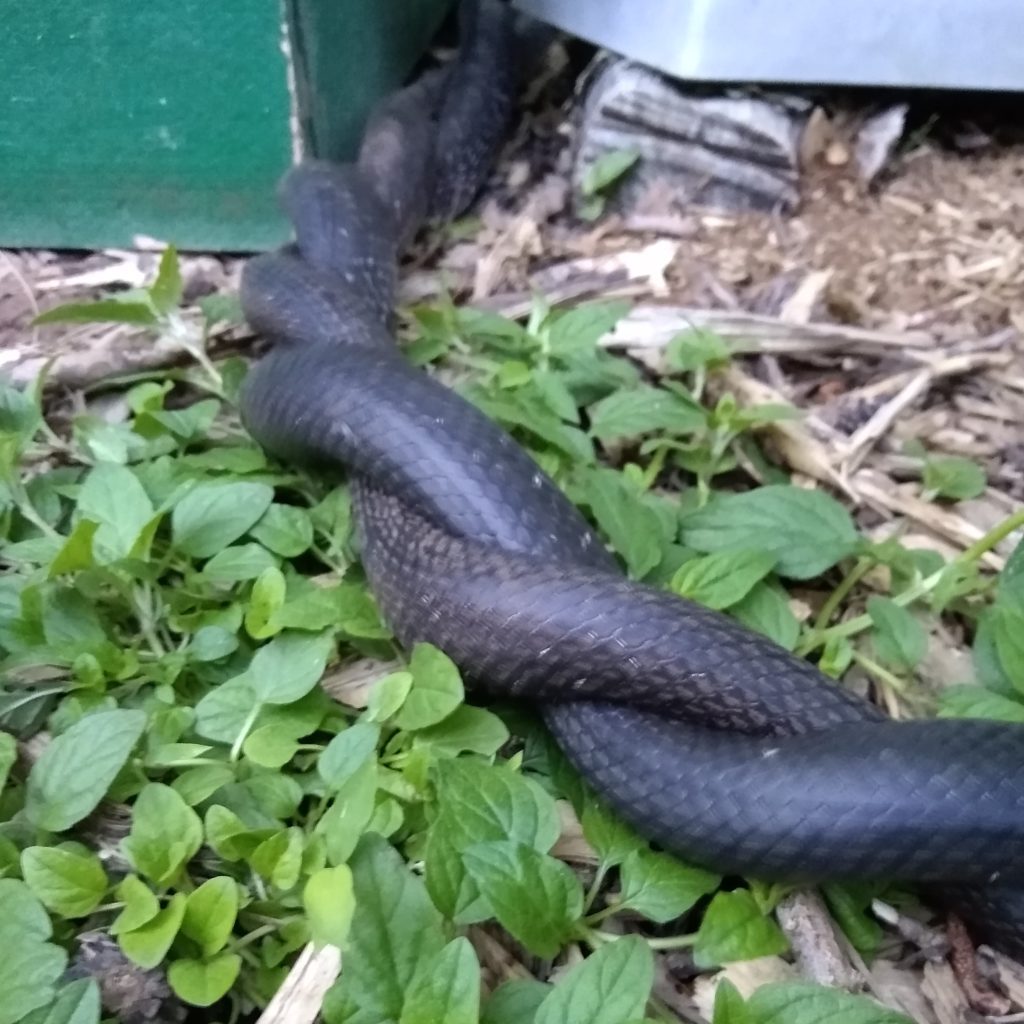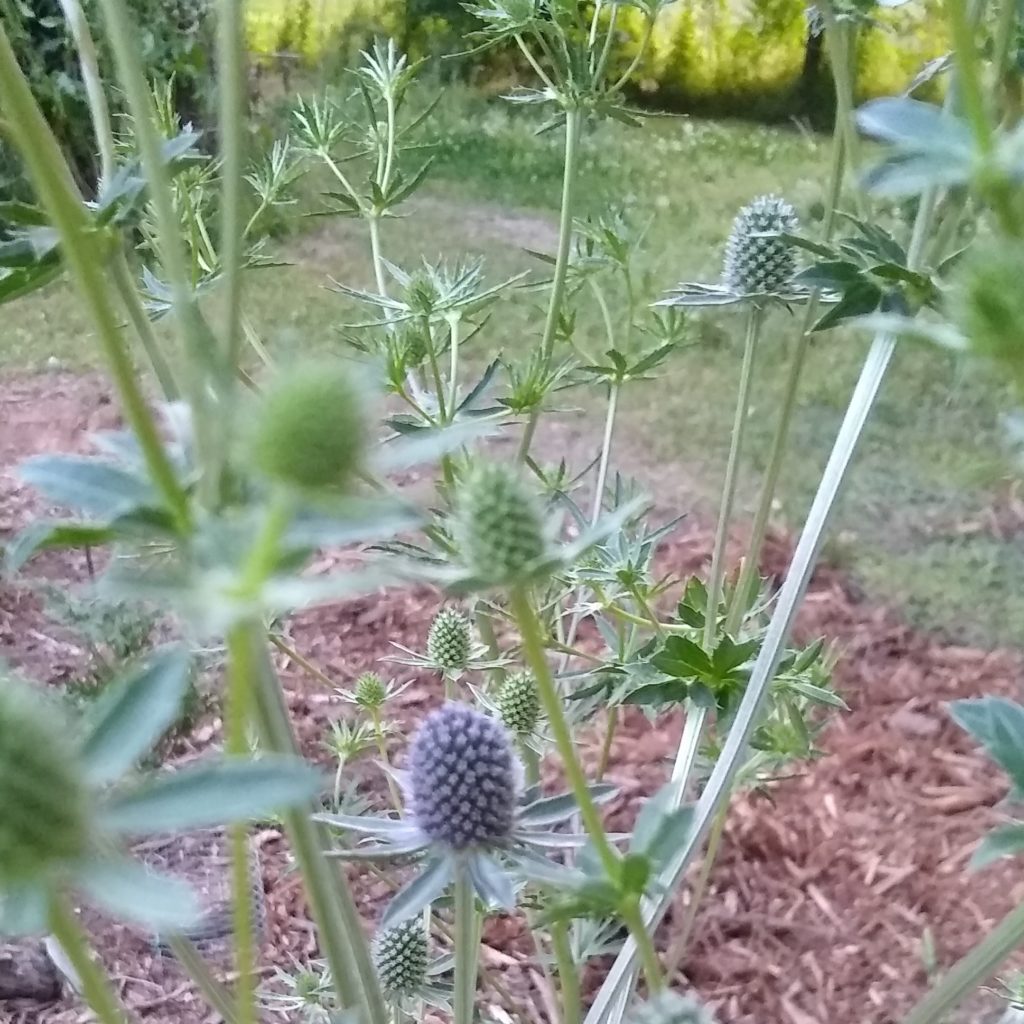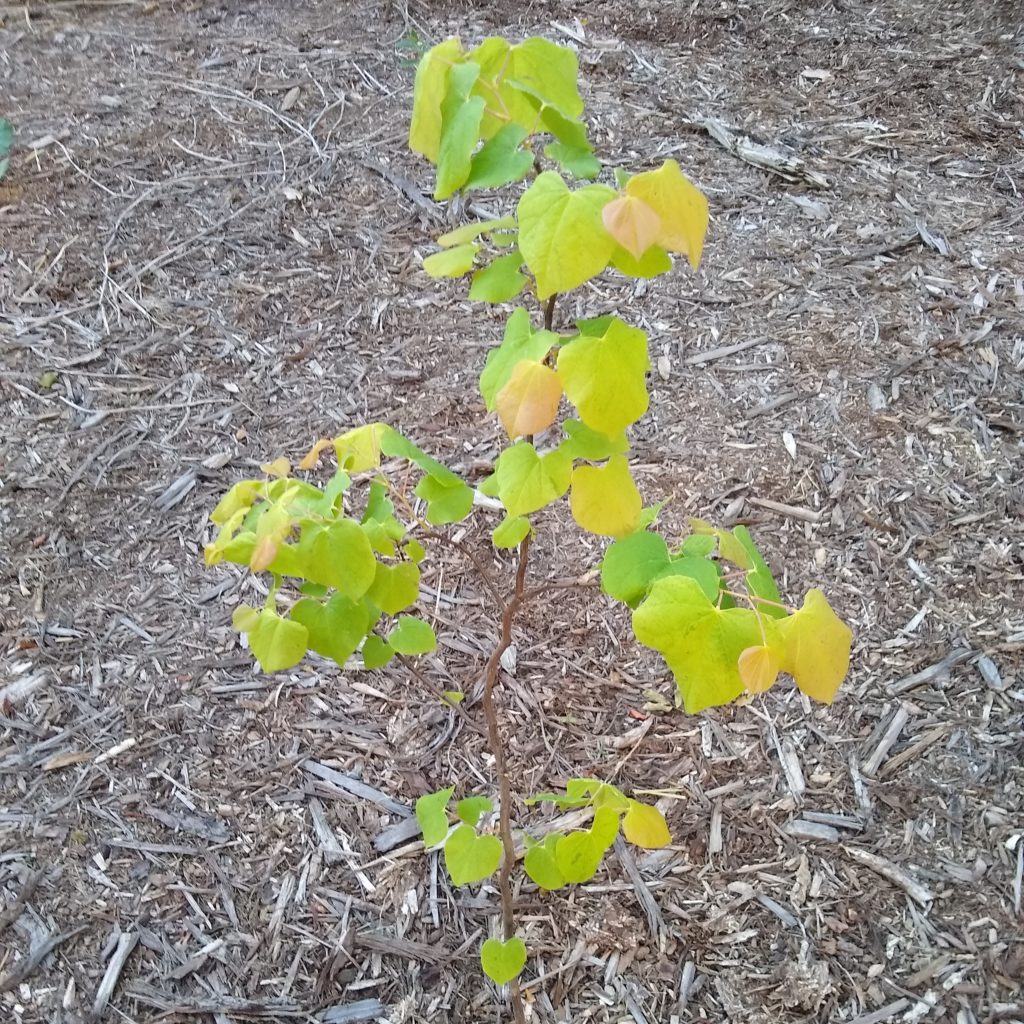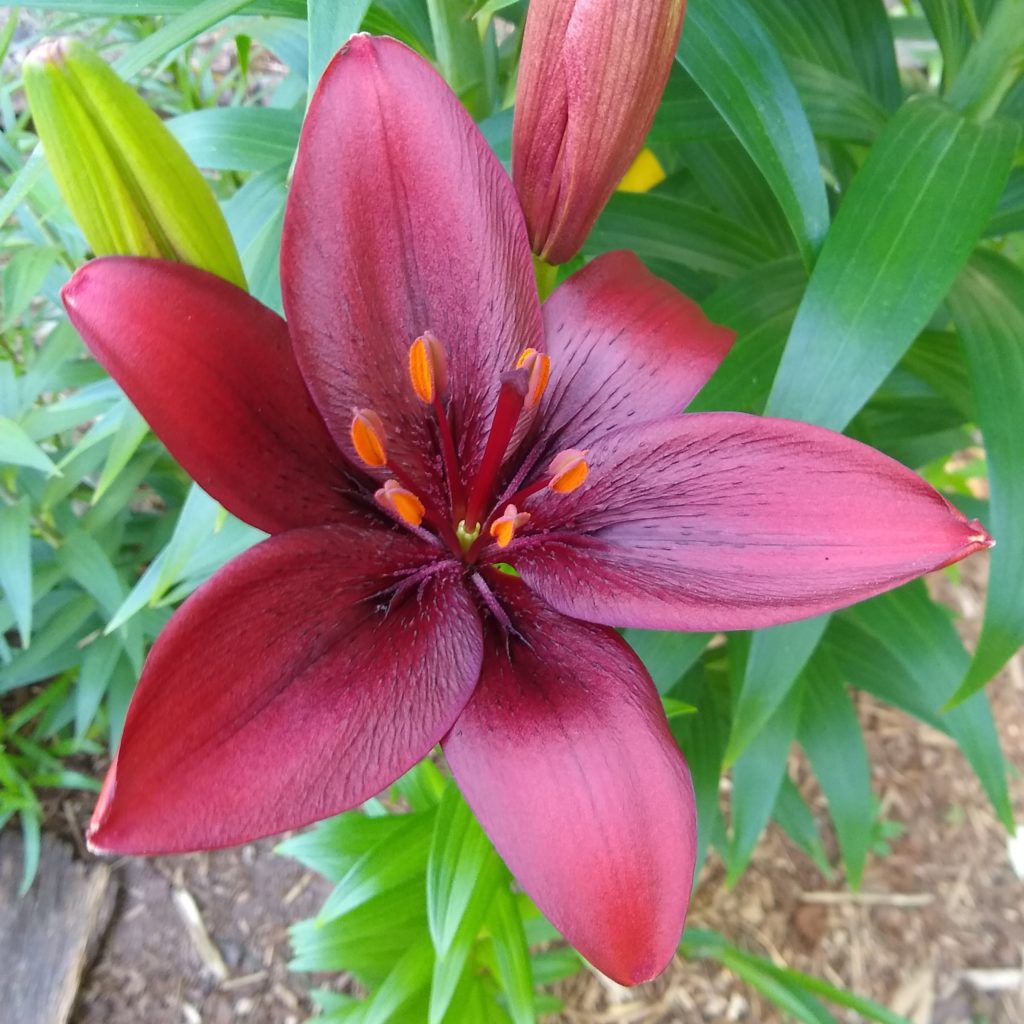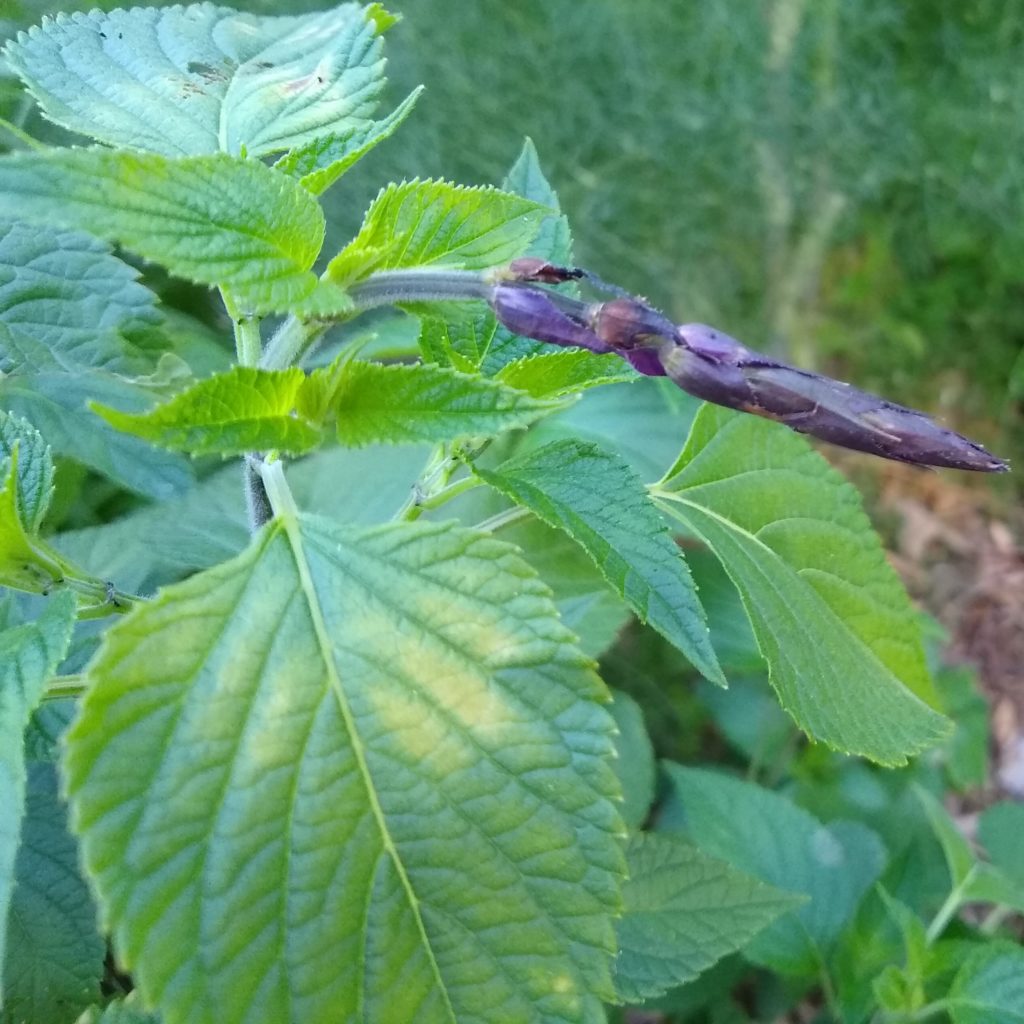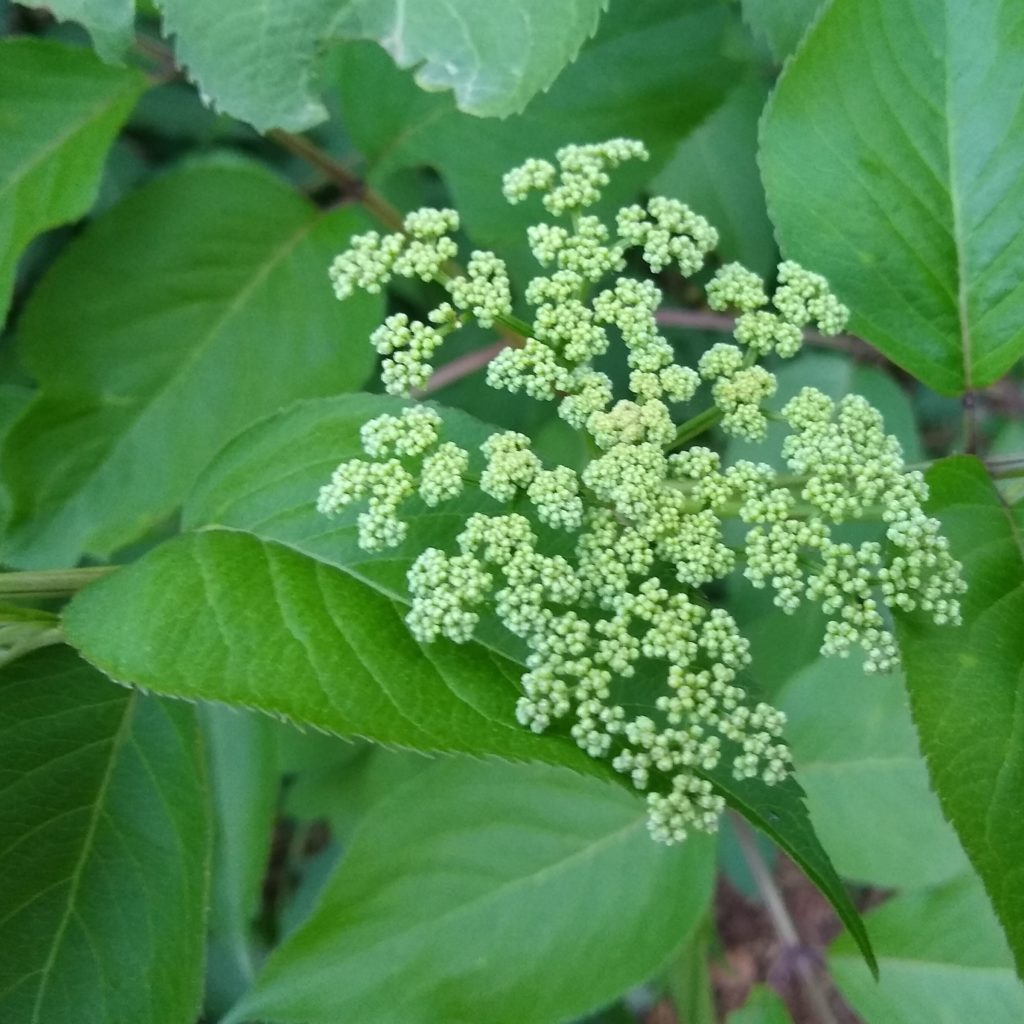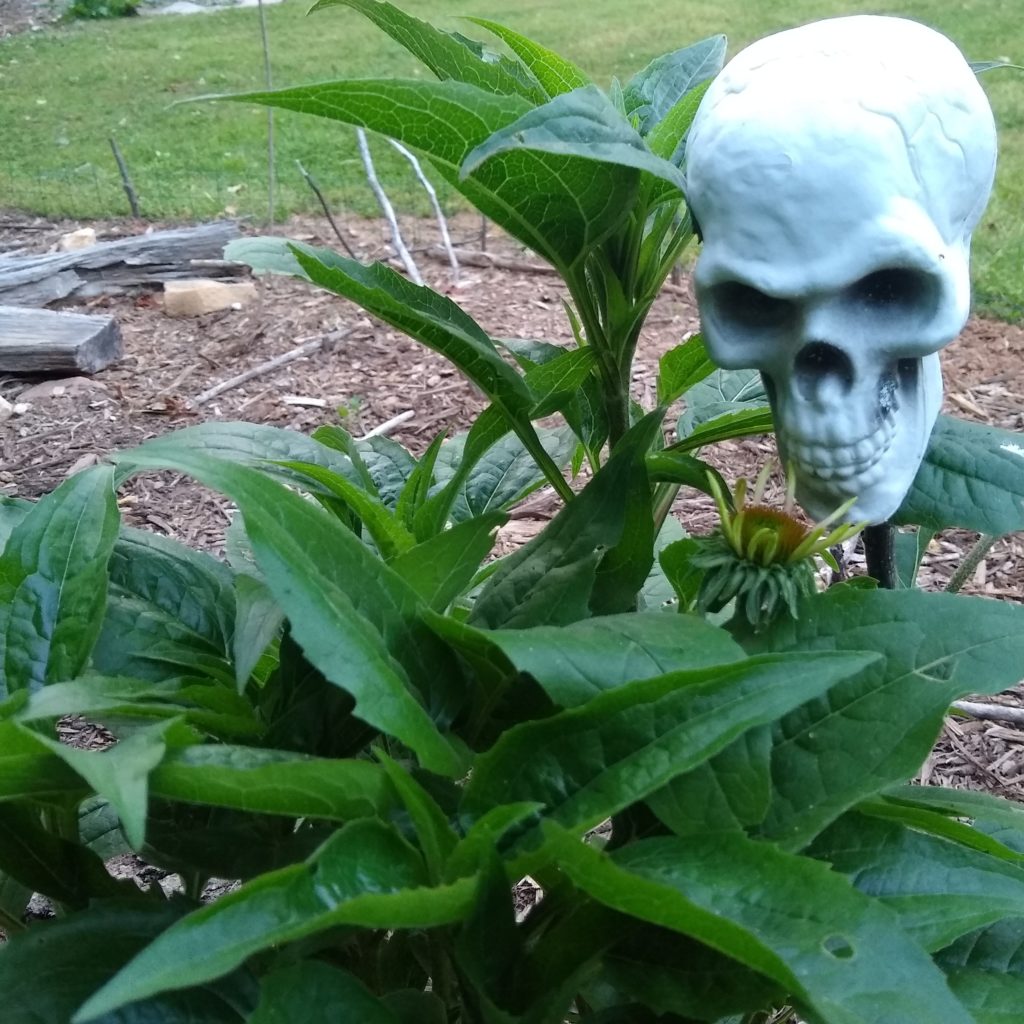I do not seem to be capable of composing a blog post after everything else on a Saturday.
1. Campanulastrum americanum
Wintersown last winter. This native plant can behave as an annual or a biennial. I didn’t fully expect this to bloom until next year. Interestingly, the two that are sending up big flowering spikes were among the second wave I planted out in spring. All of the first wave and some of the second are still just foliage rosettes.
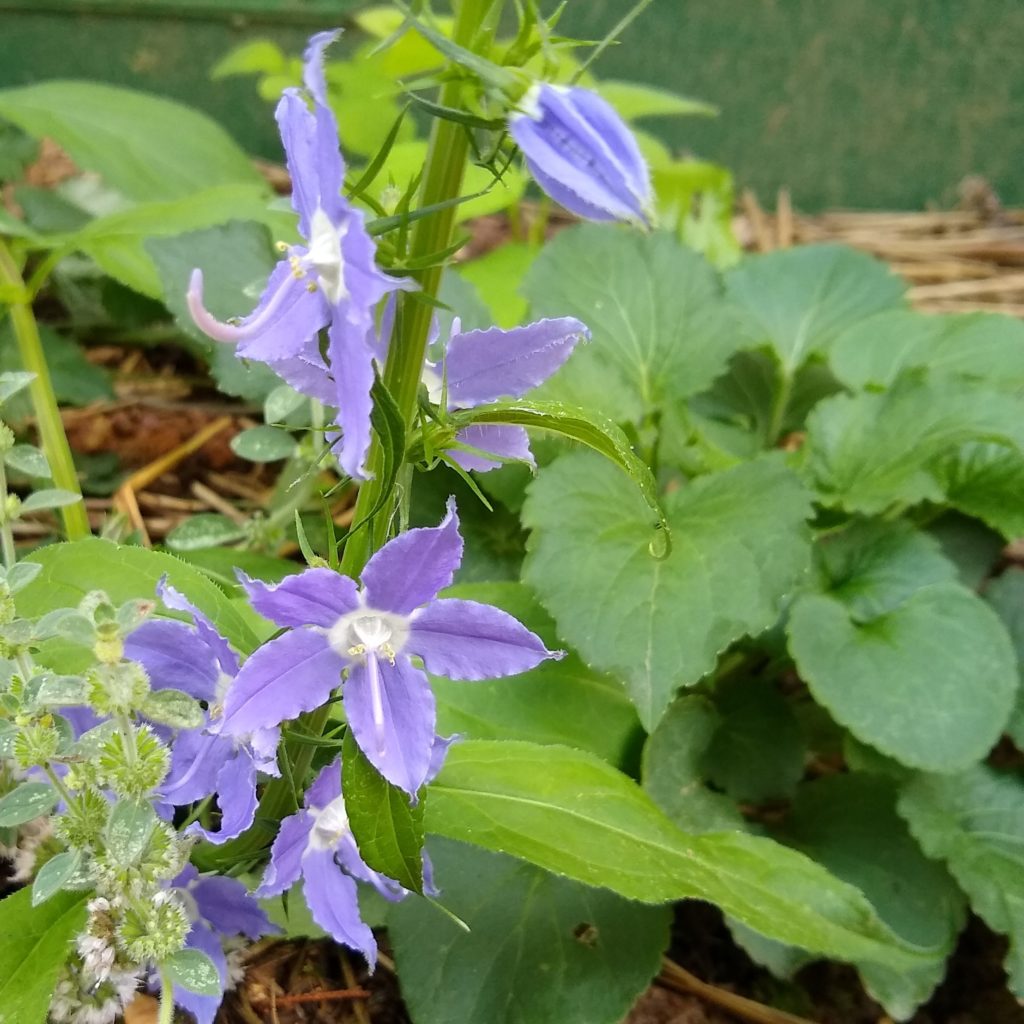
2. Agarista populifolia, now in a trash bag
I bought this lovely native shrub from N.C. Botanical Garden plant sale last fall. It was a really good fit for a very shady area. I enjoyed its gracefully arcing, interestingly colored foliage all winter and beyond.
Unfortunately I did not realize this plant produces grayanotoxin I. This is the same toxin produced by rhododendrons and azaleas, which I knew not to plant because I have goats. (And also because azaleas are gaudy as hell)
I don’t have a regular escape-goat problem, but it does and will happen occasionally. On July 19 the goats broke through a gate. My tiny Delilah ate at least one branch of this plant. The next morning she would not eat her breakfast and was scouring. She hung on for two weeks with lots of supportive care. A couple of times she seemed to be pulling through, but she ultimately died overnight last Sunday/Monday.
I ripped this shrub out yesterday and feel horrible about everything related to it.
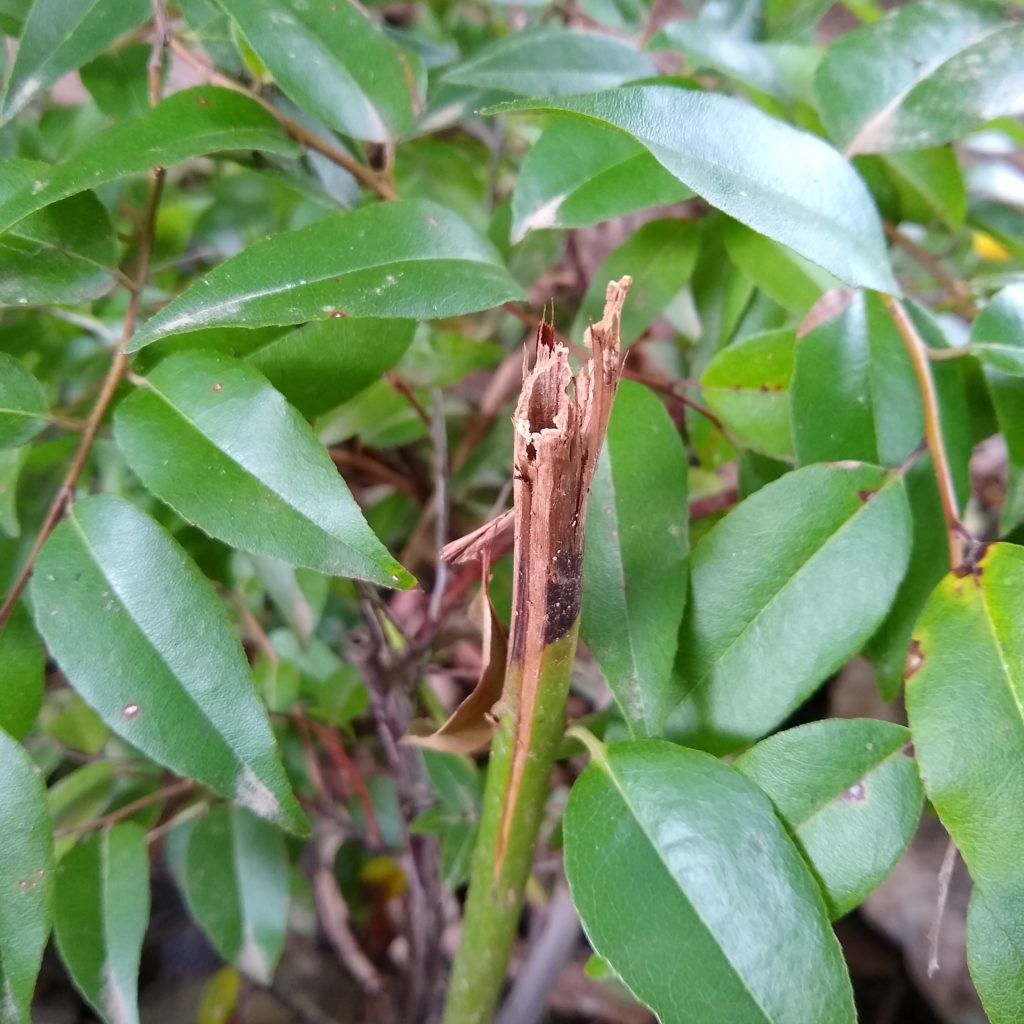
3. Working goats
Since Delilah got sick I’ve been afraid to put Gimlet, Toddy, and Emerson anywhere other than their primary pasture.
But, I got goats to help eat brush, so I needed to be able to put them back to work eventually.
Yesterday I took a deep breath and put them in this privet, wild grape, honeysuckle, greenbrier, and poison ivy infested spot.
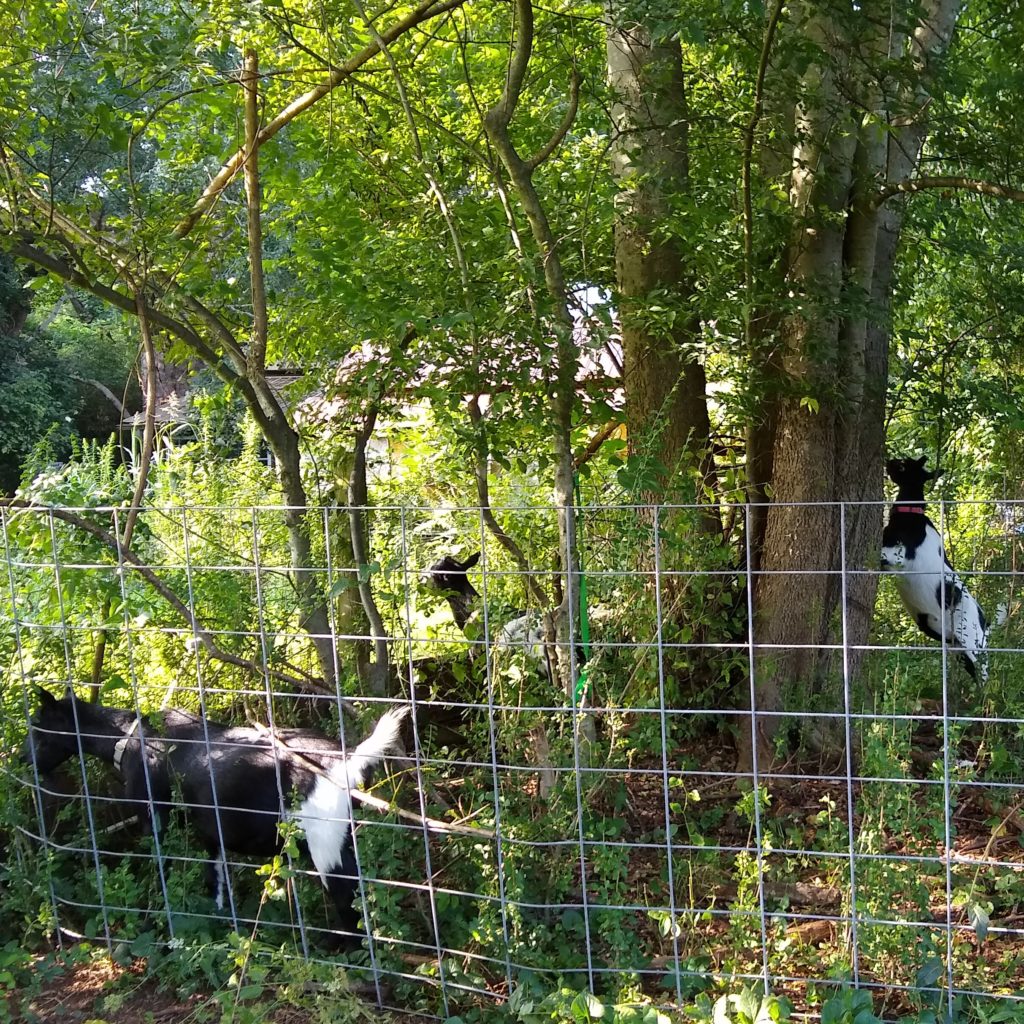
4. Celosia argentea var. cristata ‘Tornado Red’
Self-sown volunteers this year. I wish they were more a deep red than a magenta, but I still love them.
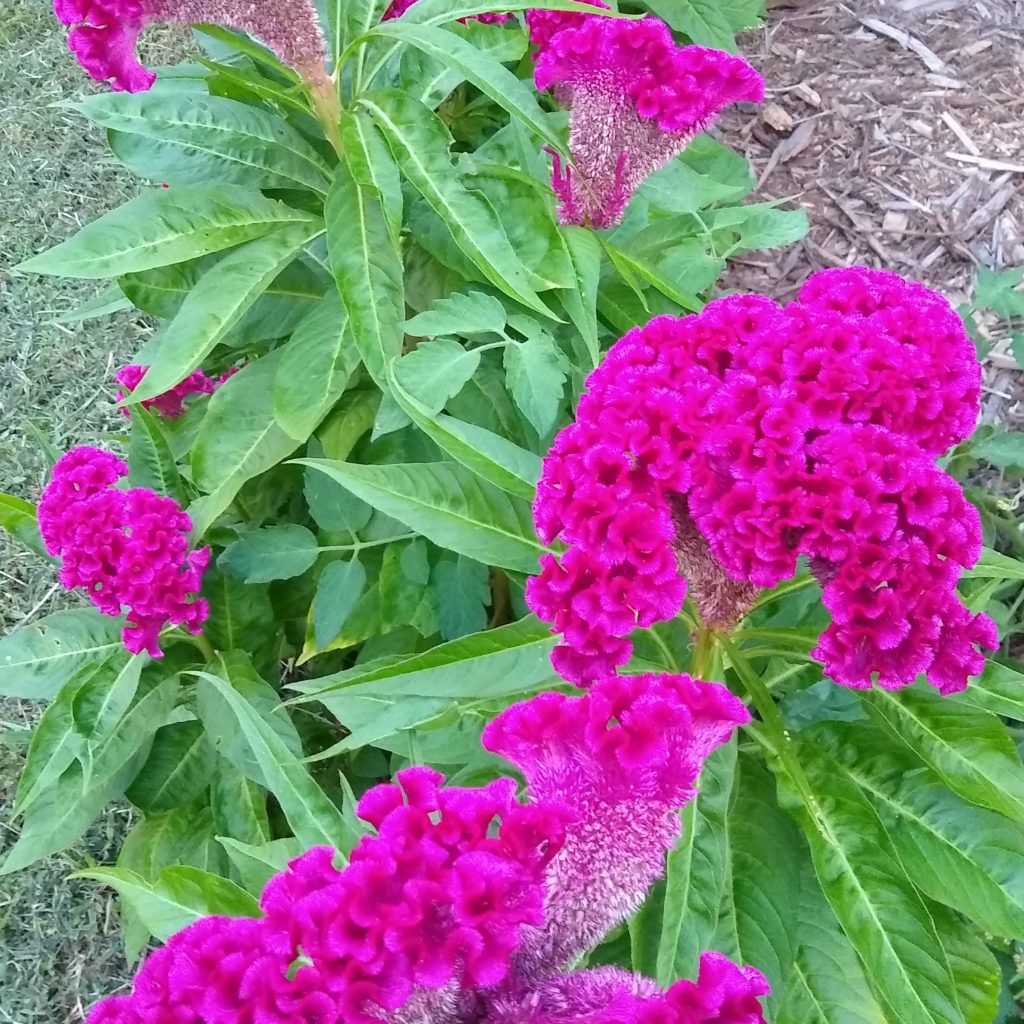
5. A view
This is such a crappy photo but it captures a view I’ve been enjoying. I like the punctuation-like structural effect of growing indeterminate tomatoes pruned and staked. This is my first year trying it and they do need more attention/care (and netting to protect the fruits from chickens/turkey), but they sure are easier to harvest and are not a sprawling monstrous heap going everywhere. I’m afraid I really do prefer a mostly neat, controlled looking garden, but lack the staff to maintain one! I was considering taking out the irises because their flowers are a disappointing sad old-dishrag-yellow, but I really do appreciate the textural contribution of their lovely leaves all summer. Butternut squash rambling everywhere in the foreground. The asparagus patch creates a nice, soft, smoky backdrop.
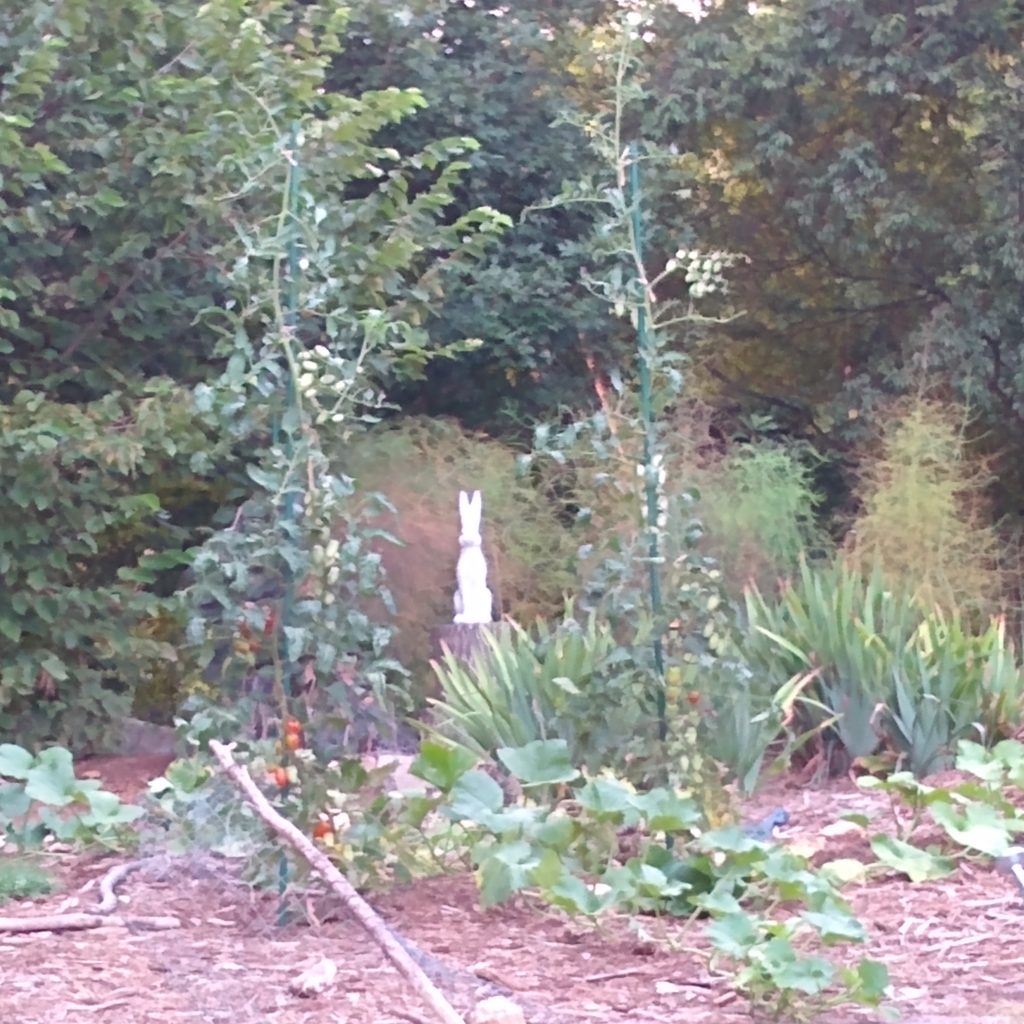
6. Spalding Labs Fly Predators, second shipment
A month and a half or so ago the flies were getting out of control and so annoying.
I’ve noticed a definite decrease in flies since putting out my first shipment of these guys. But it is a whole summer-long regimen to break the fly lifecycle and keep populations down. So this is batch two, which, unlike batch one, smelled like dirty socks. Whatever.
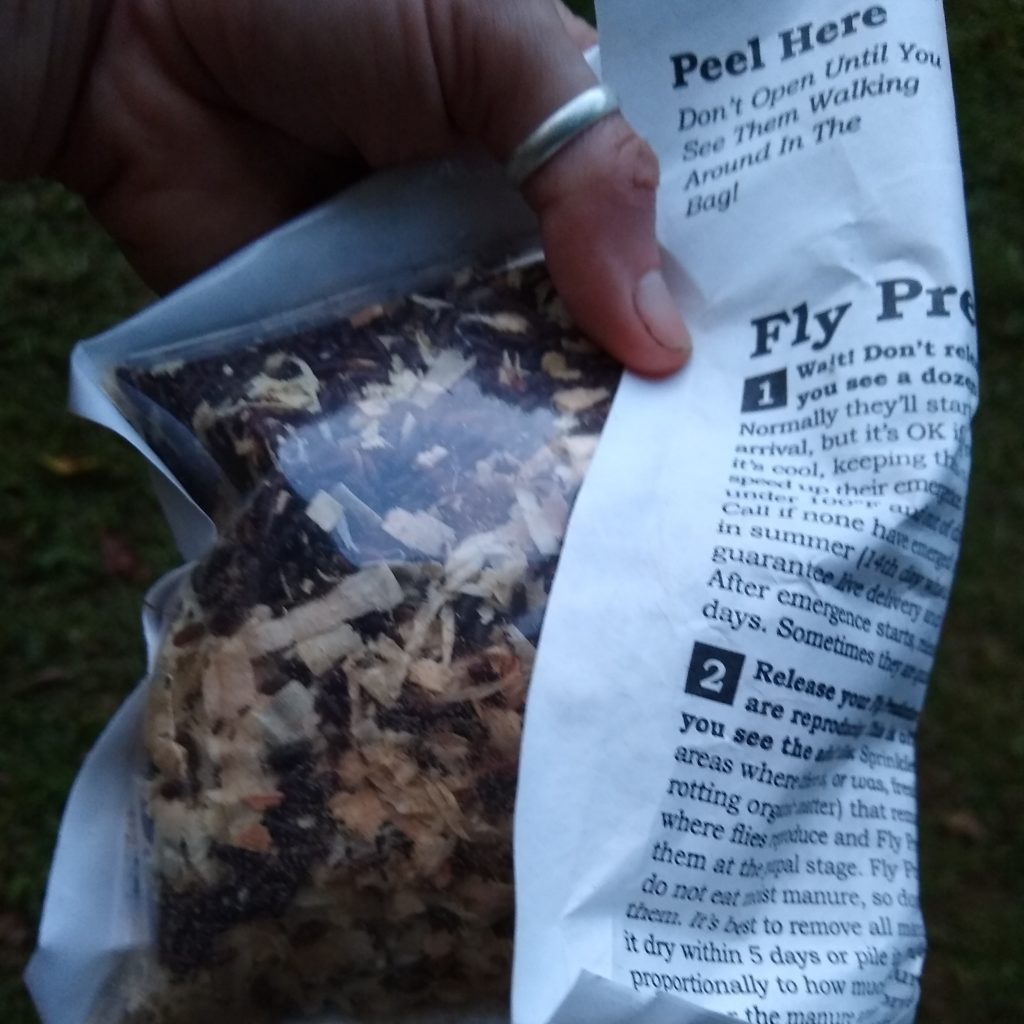
Six on Saturday is hosted by The Propagator.
